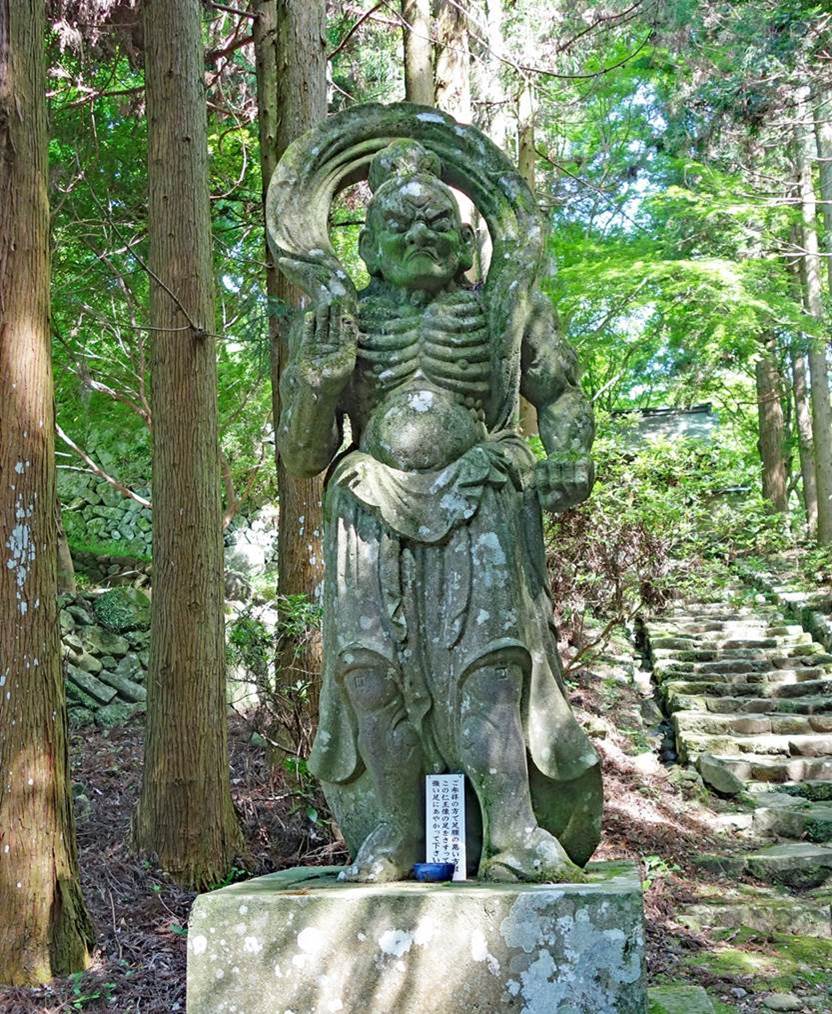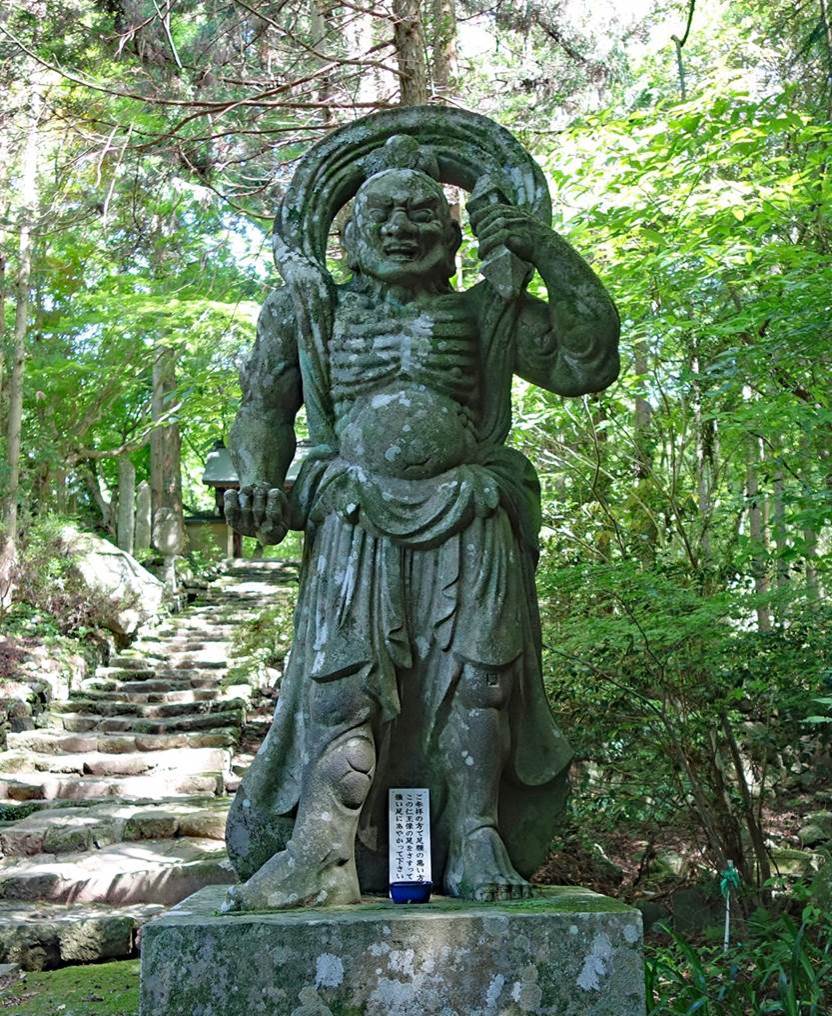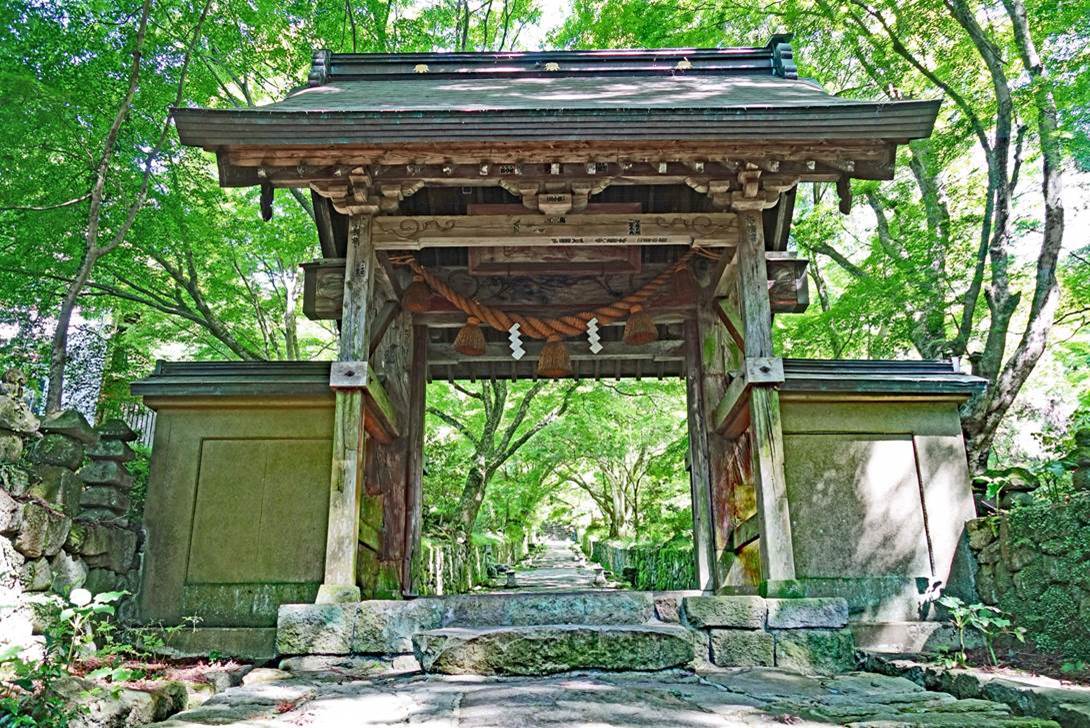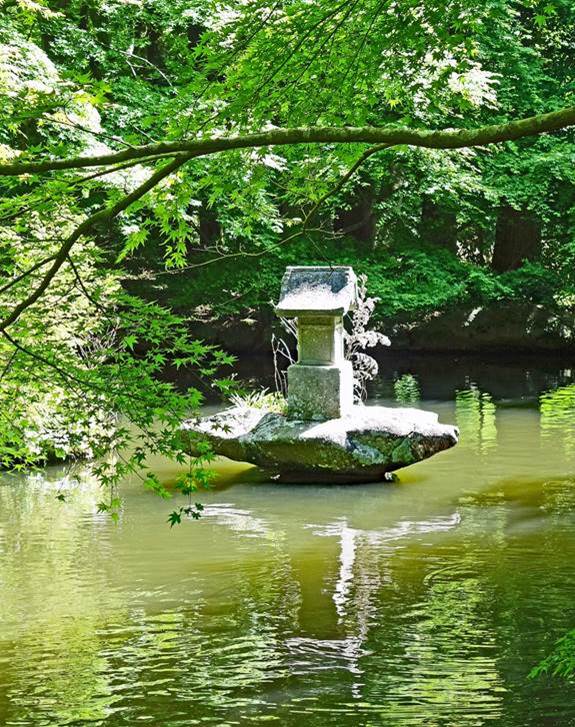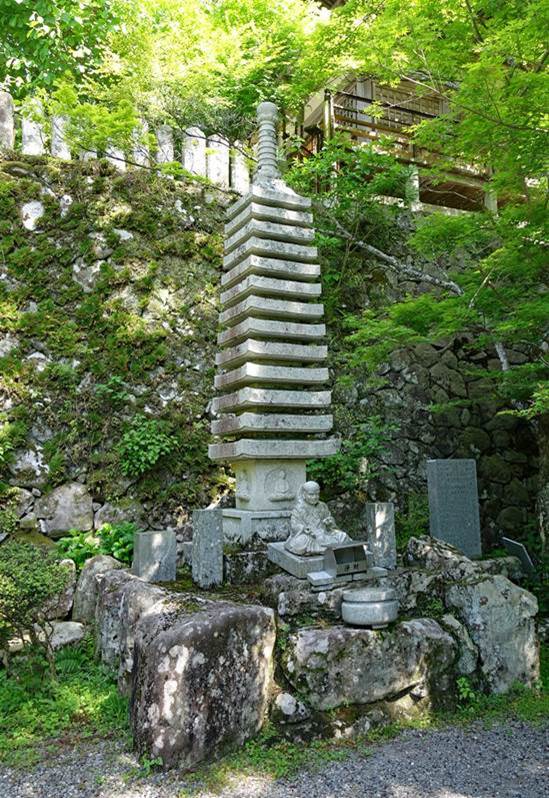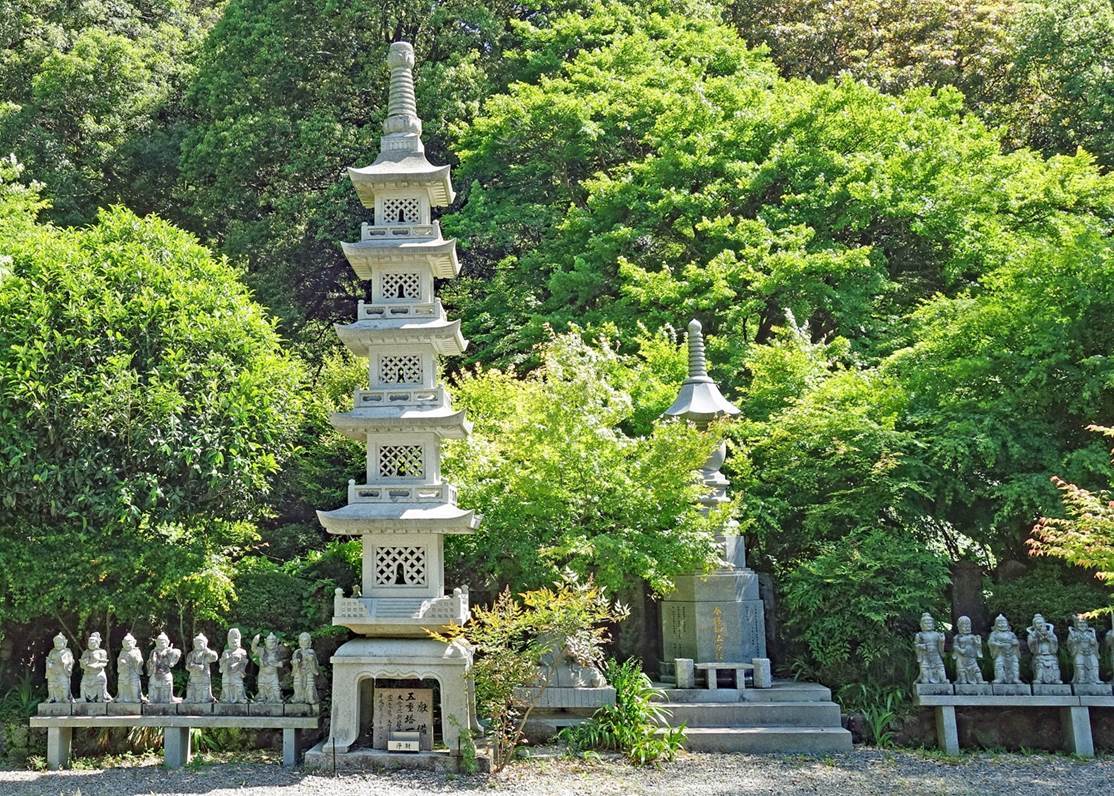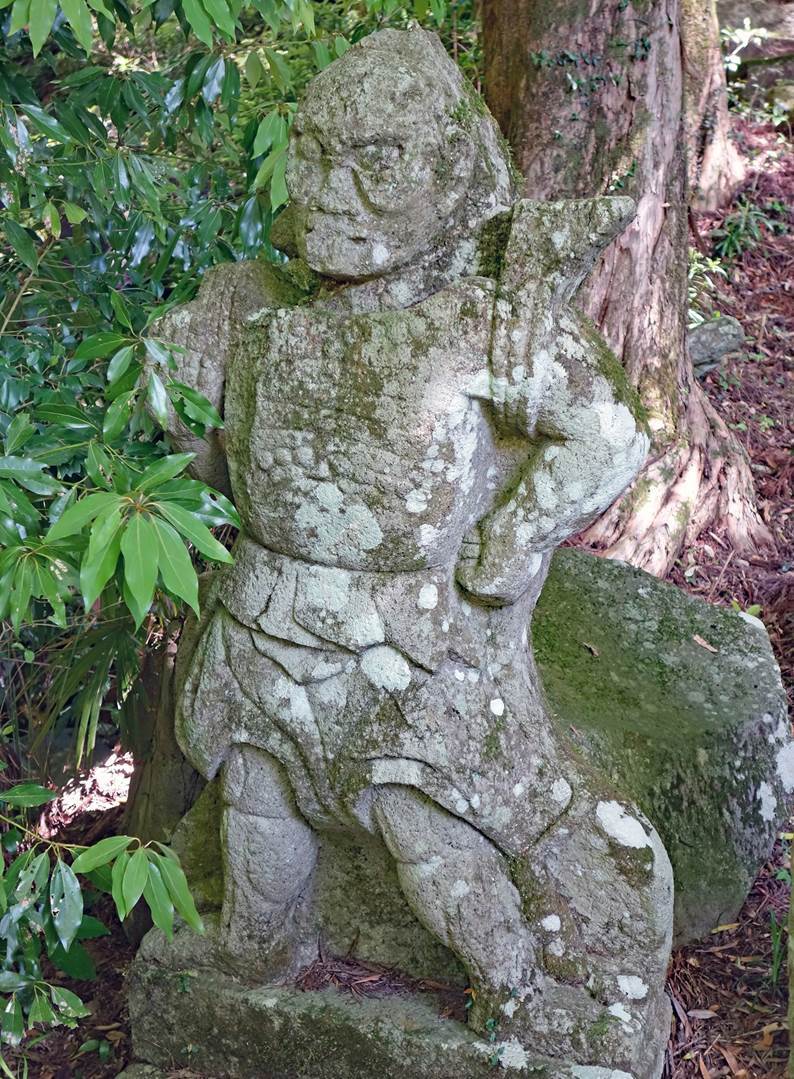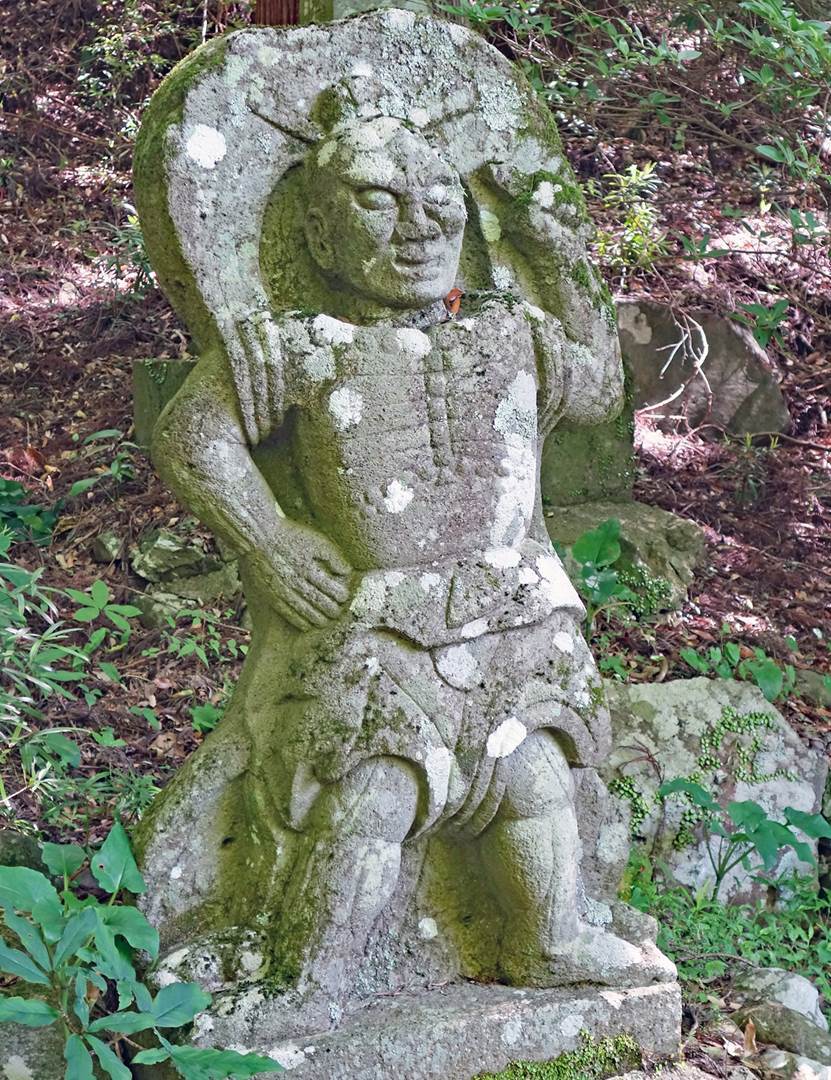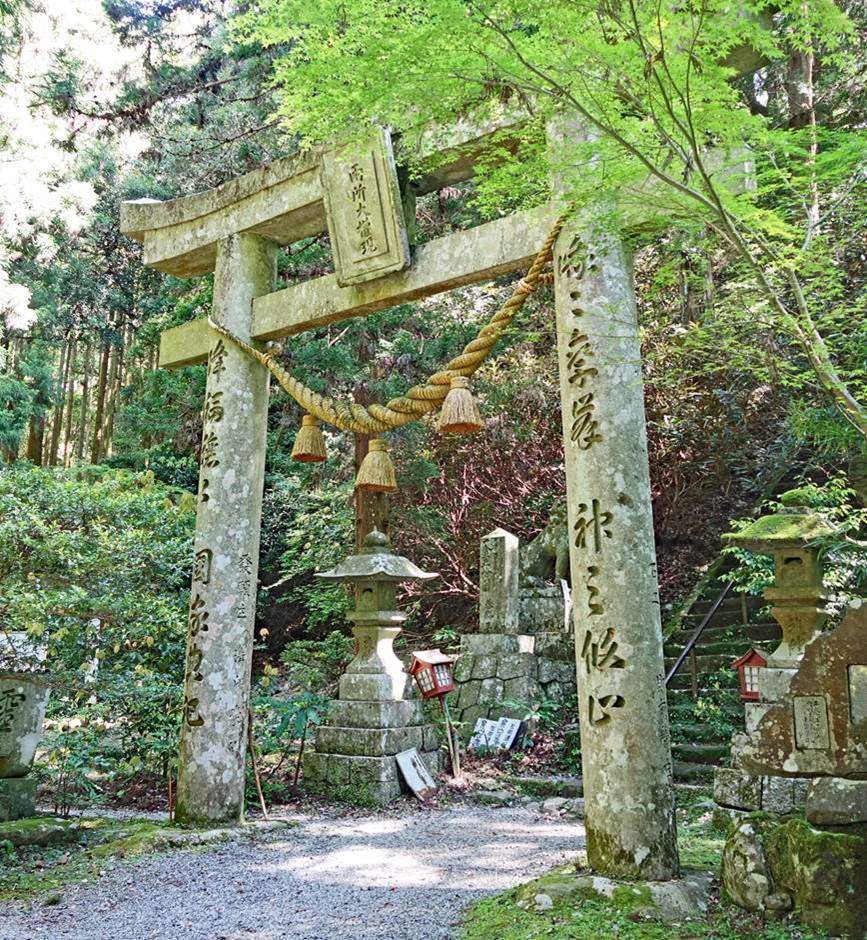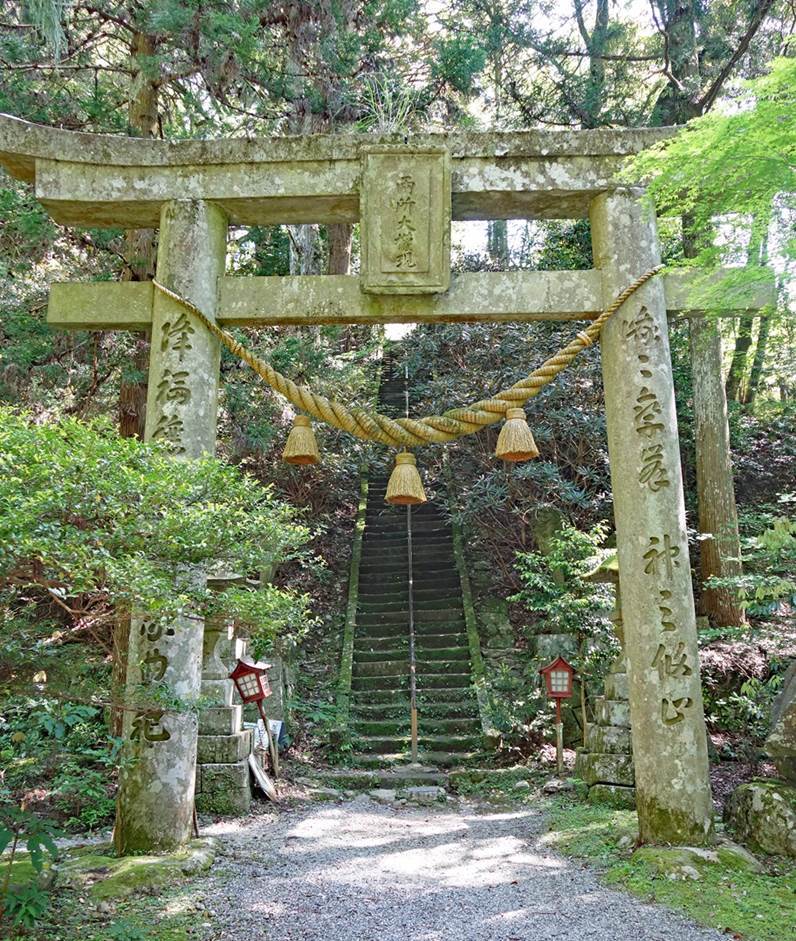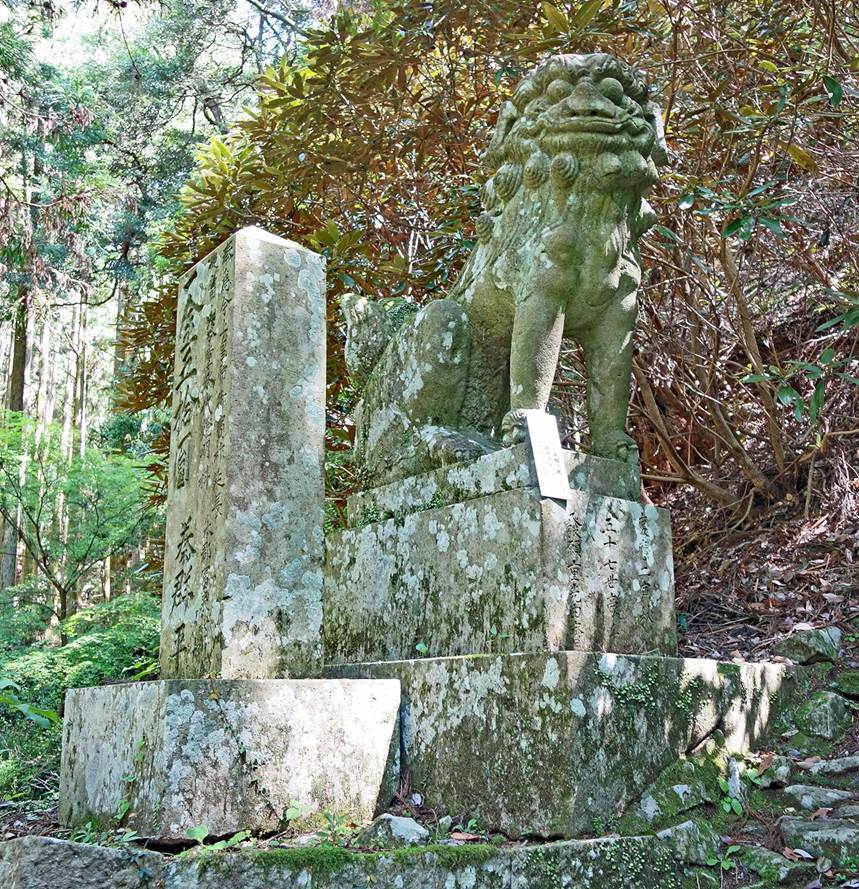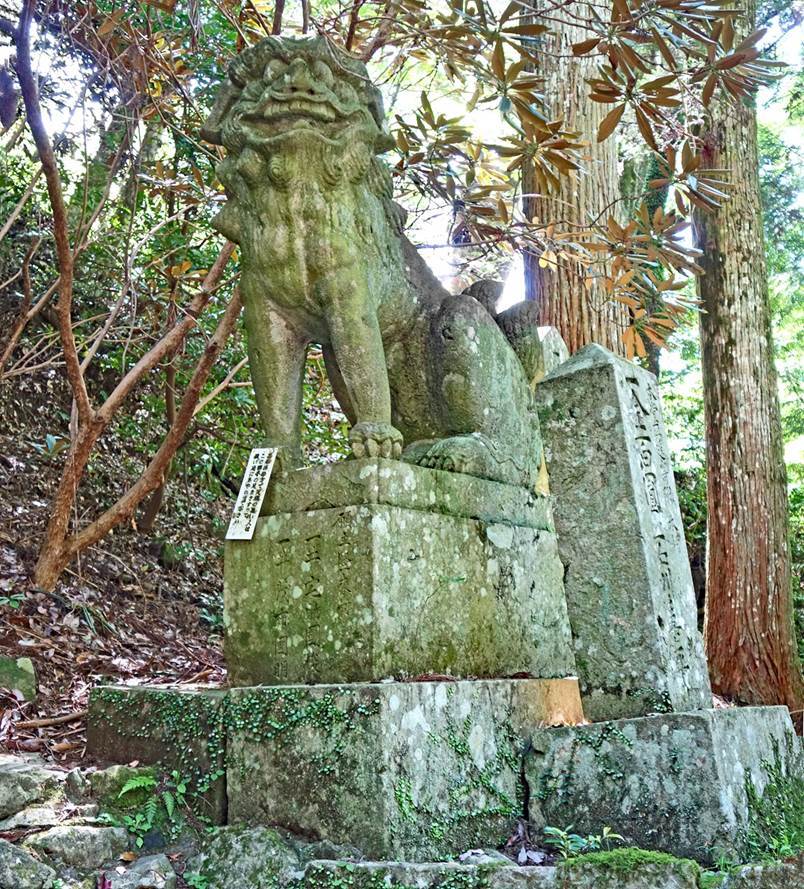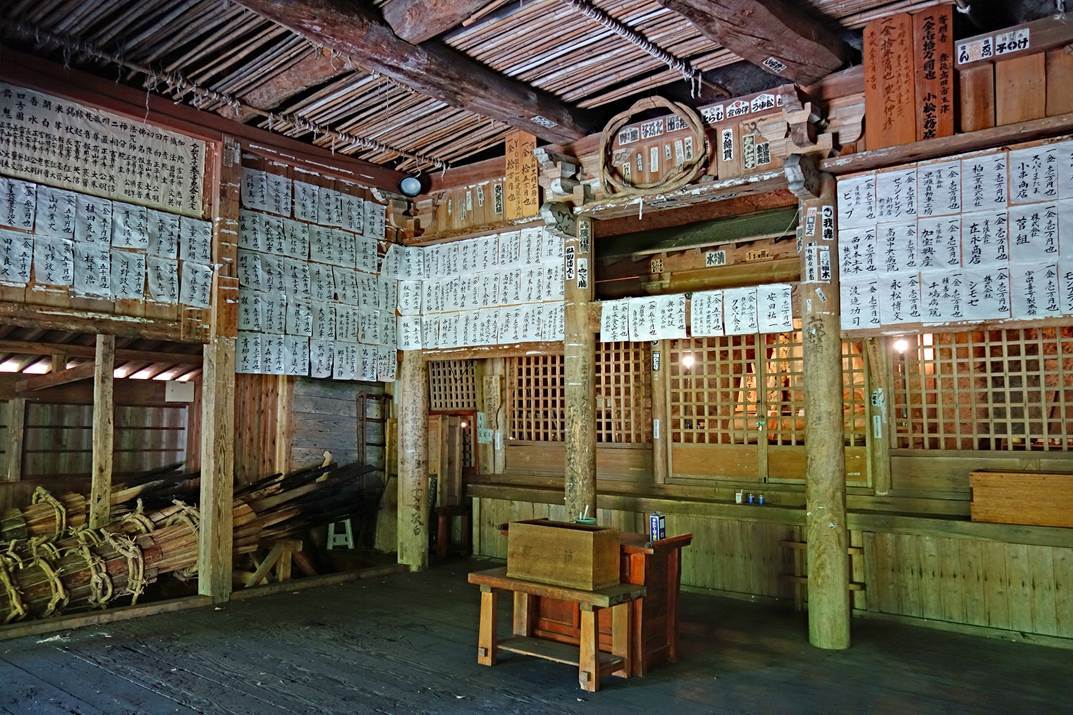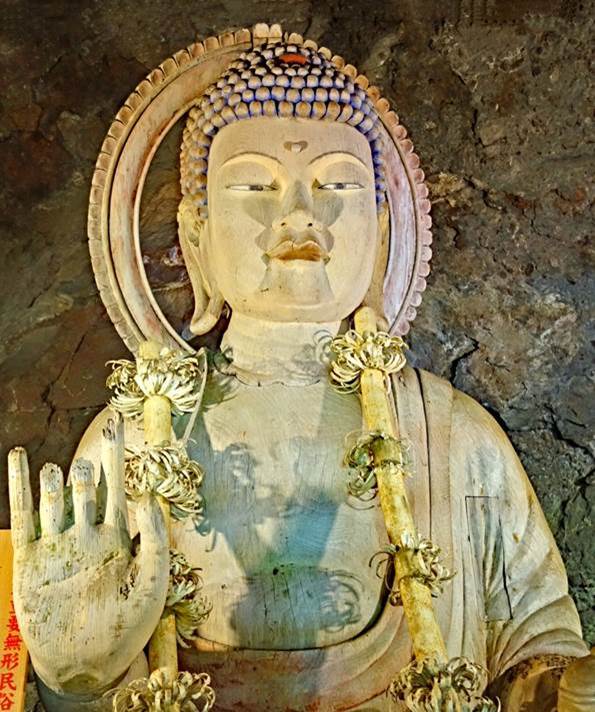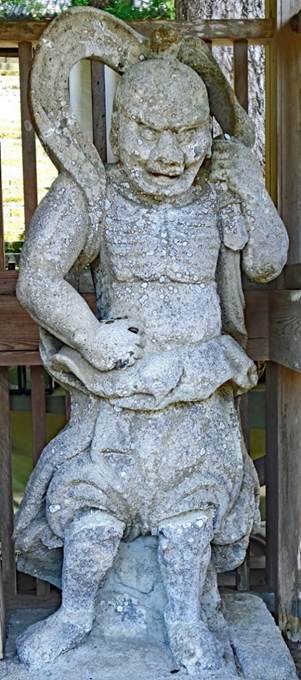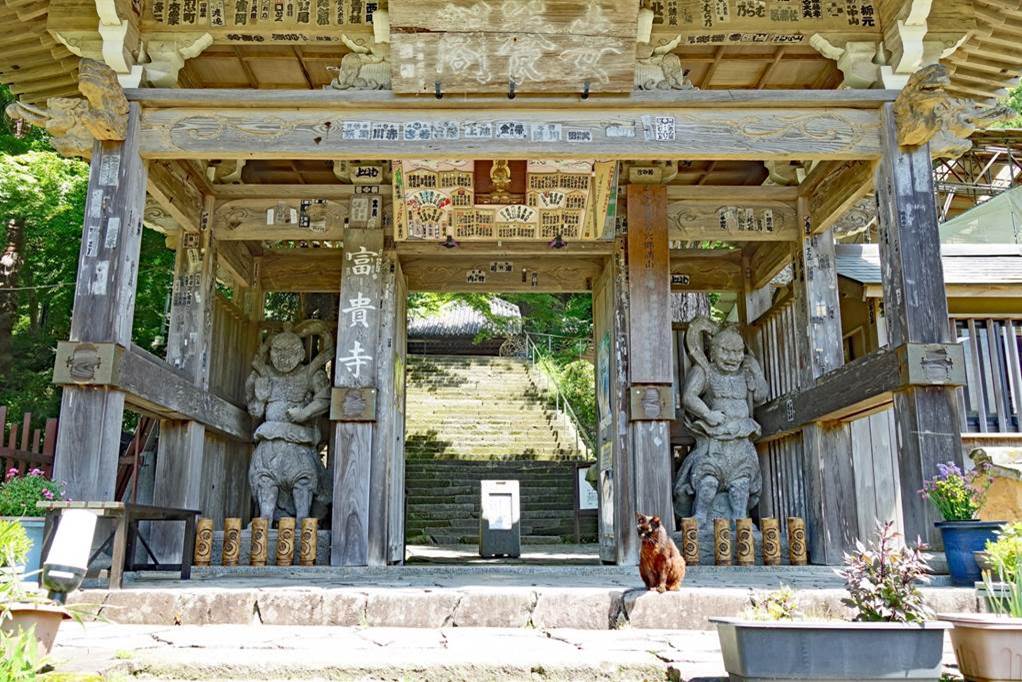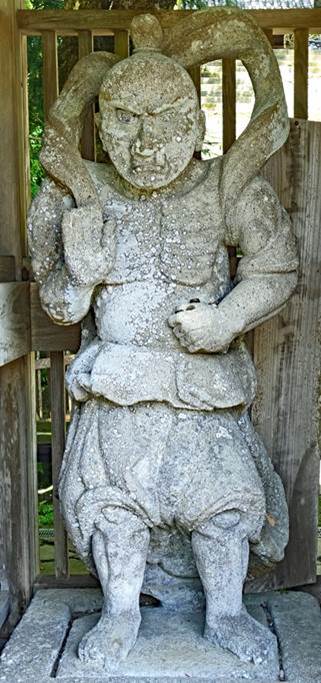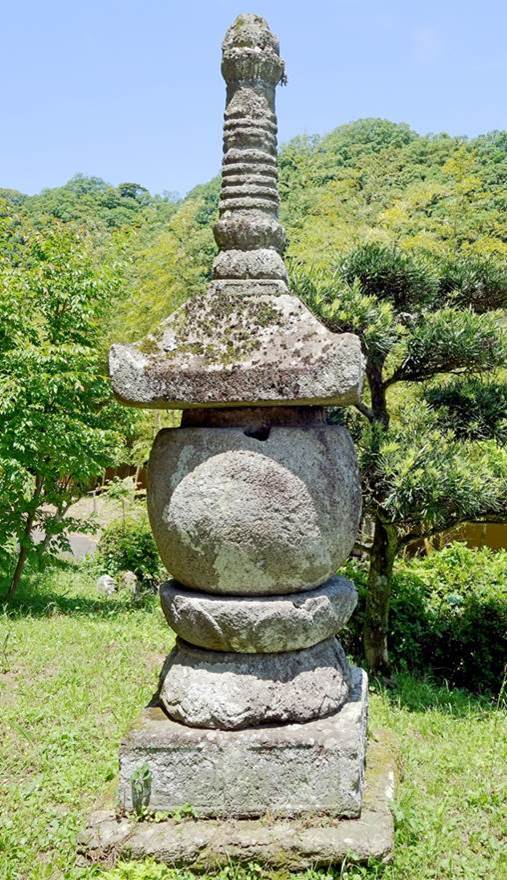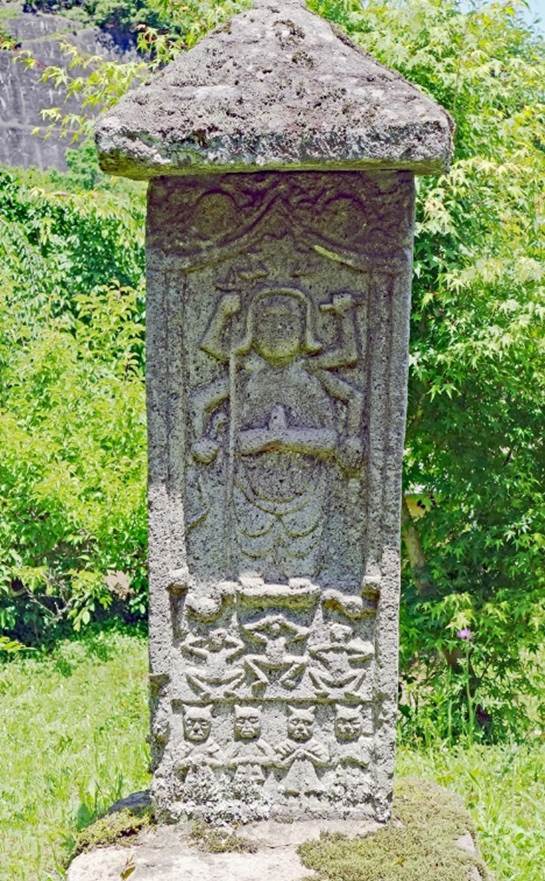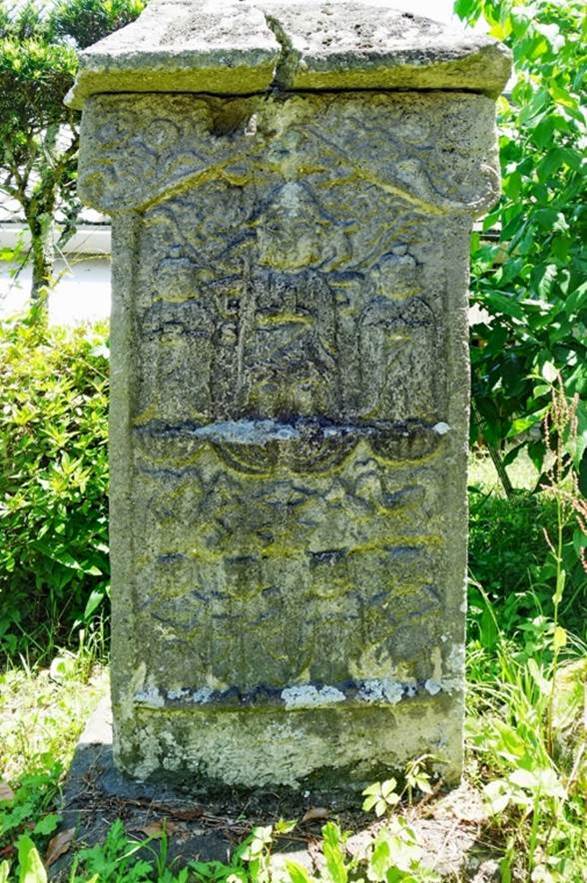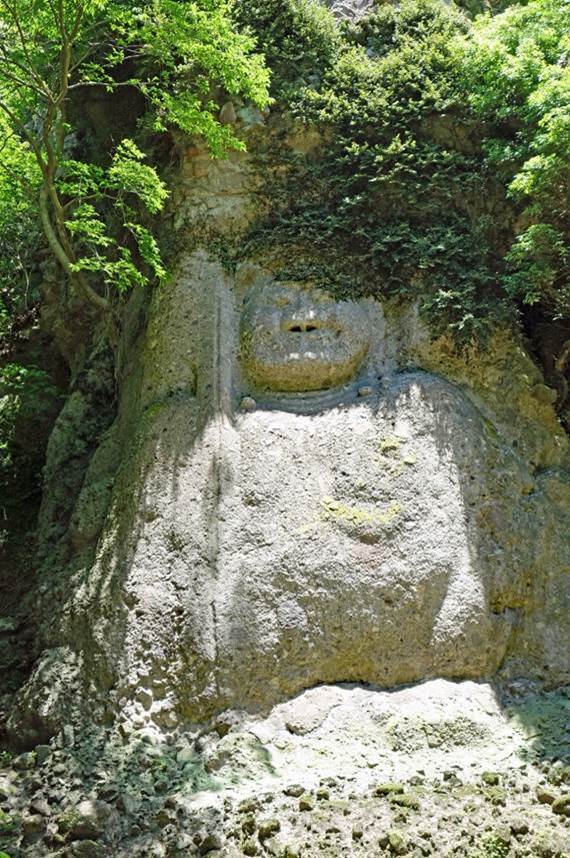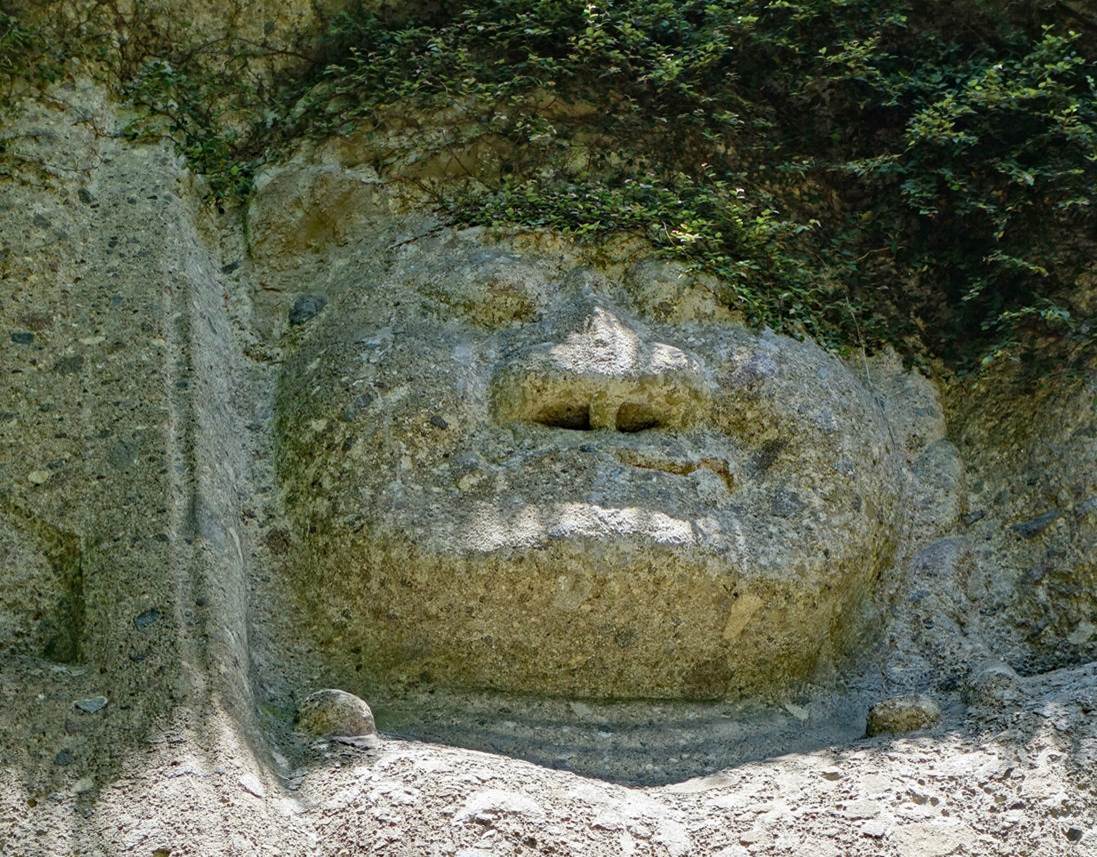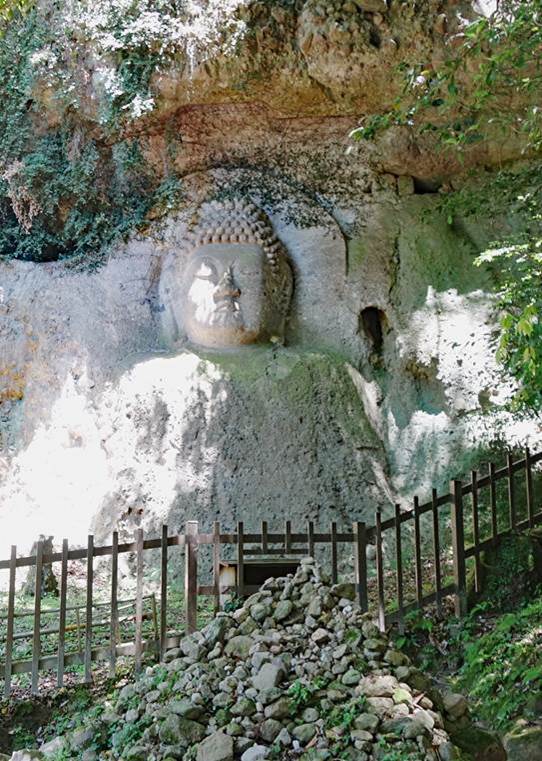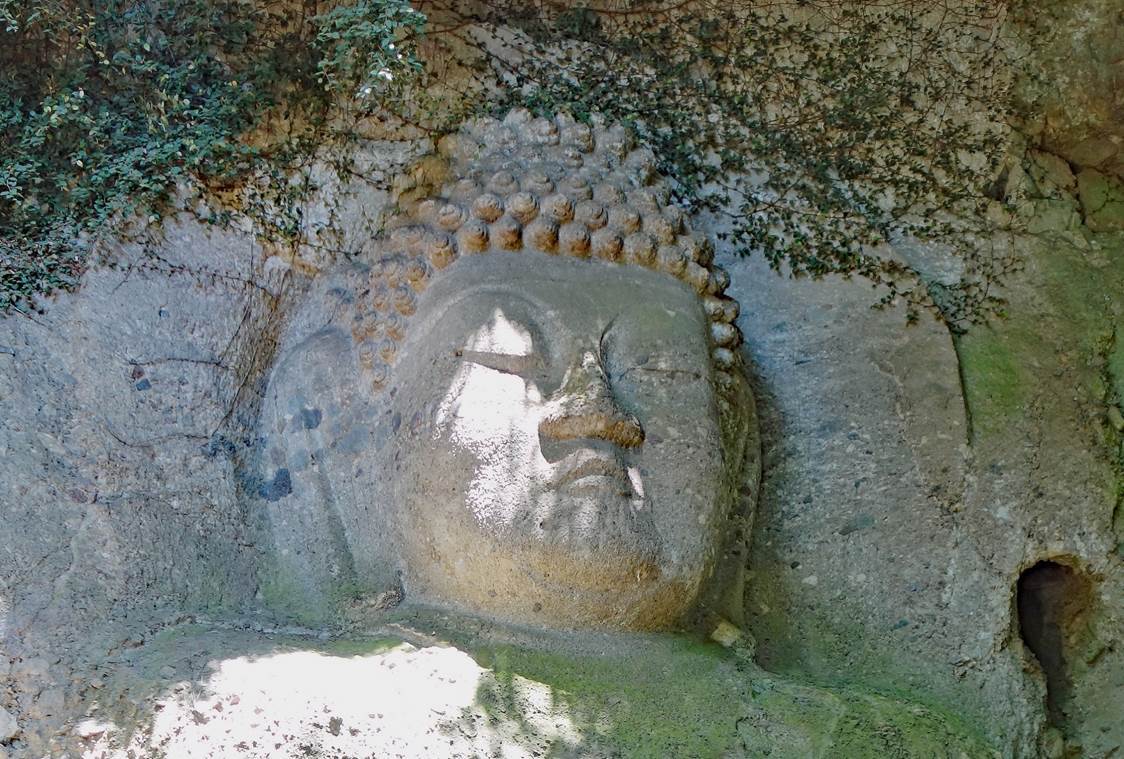Kunisaki Peninsula, Kyushu, Japan (May
2024)
![]()
Back to main Japan May 2024 page
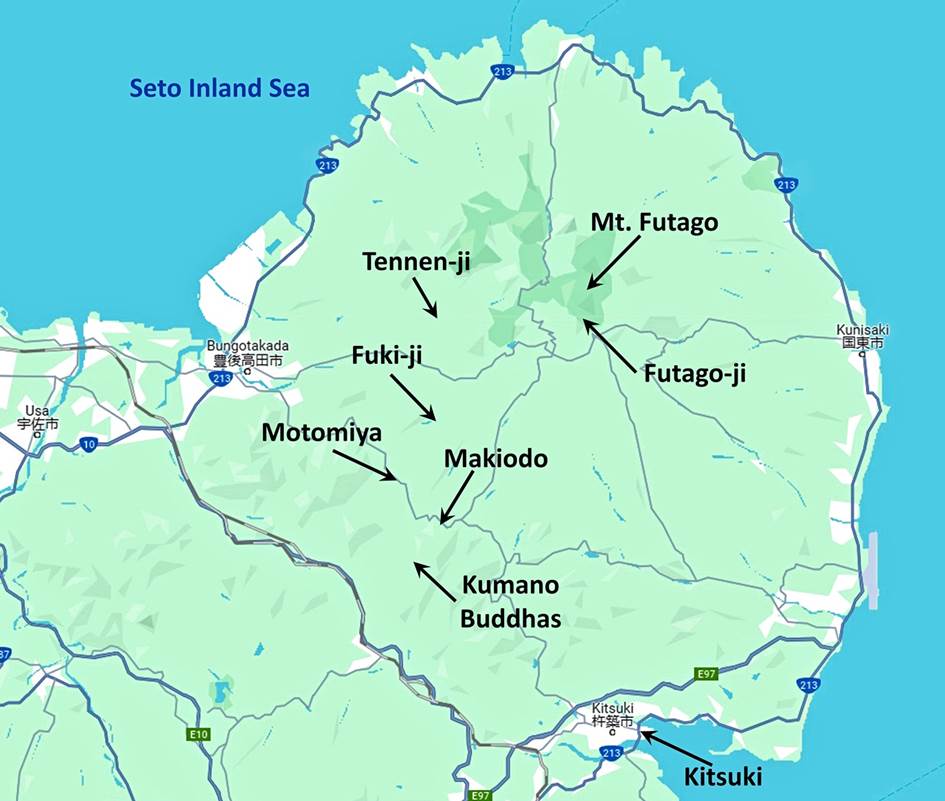
Located north
of Beppu, the Kunisaki peninsula is a round, cone-shaped protrusion of Kyushu
into the Seto Inland Sea. Roughly at its center, Mount Futago (721m), the
peninsula's highest summit, is the apex of the cone, from which ridges and
valleys extend radially in all directions. Sparsely populated and mostly
covered in forest and farmland, it is home to numerous undisturbed Buddhist
temples and other spiritual places, which together contribute a unique local
syncretic religious culture, known as Rokugo Manzan, which combines elements of
Buddhism, Shinto, and mountain worship traditions. The peninsula also includes
sites of large Buddhist sculptures carved in exposed rock.
Futago-ji
This Buddhist
temple of the Tendai sect, founded more than 1300 years ago, is located on a
southern slope of Mt. Futago (712m), the highest mountain in the peninsula.
Currently, this temple also serves as the primary temple of Rokugo Manzan. Its
compound covers a large area of forested slopes, in which meandering paths and
stairways connect several halls.
Gate of the
Nio Guardians marking the start of a long stairway leading to the first hall,
the Gomado. The Nio statues were created in 1814,
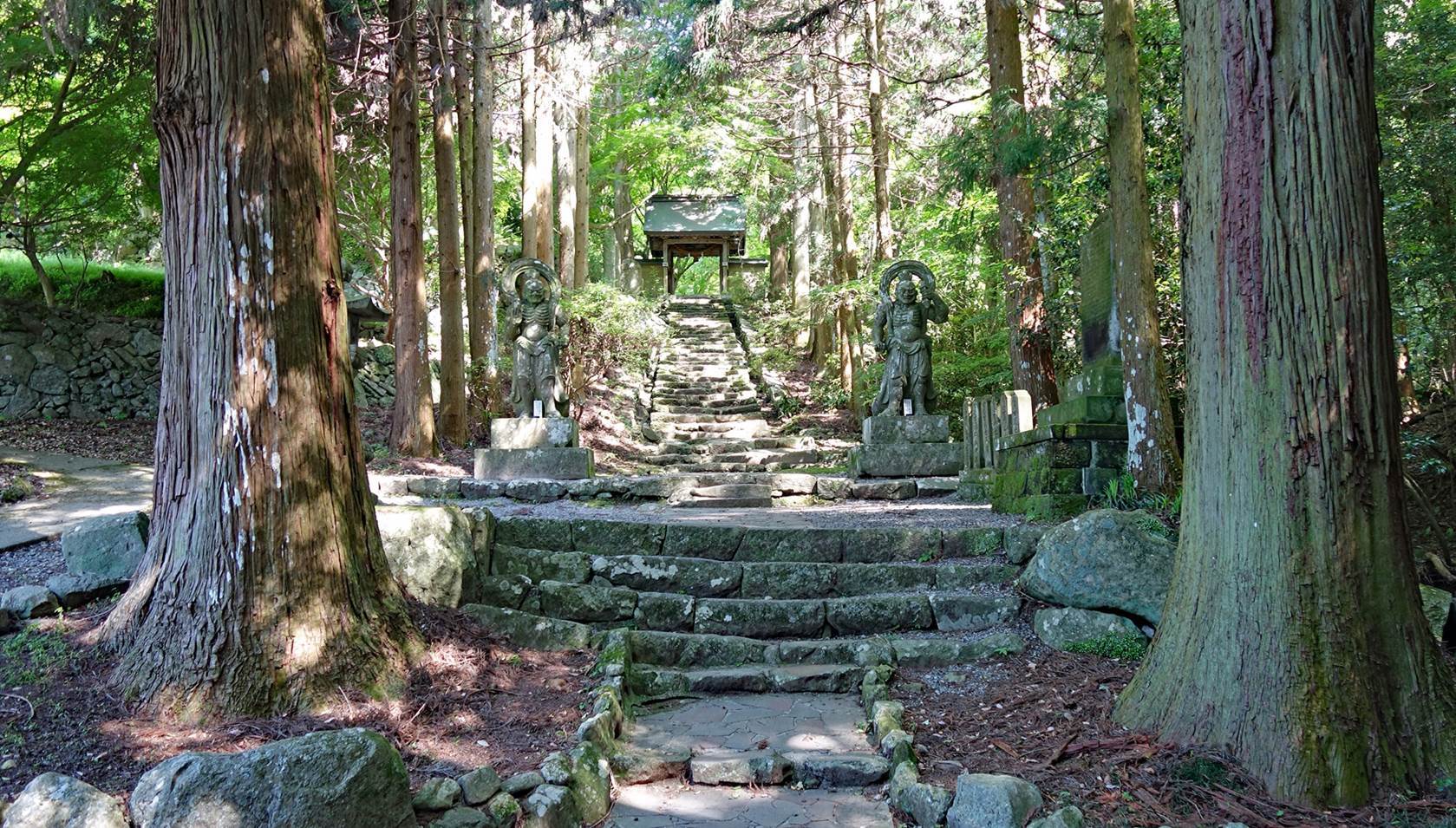
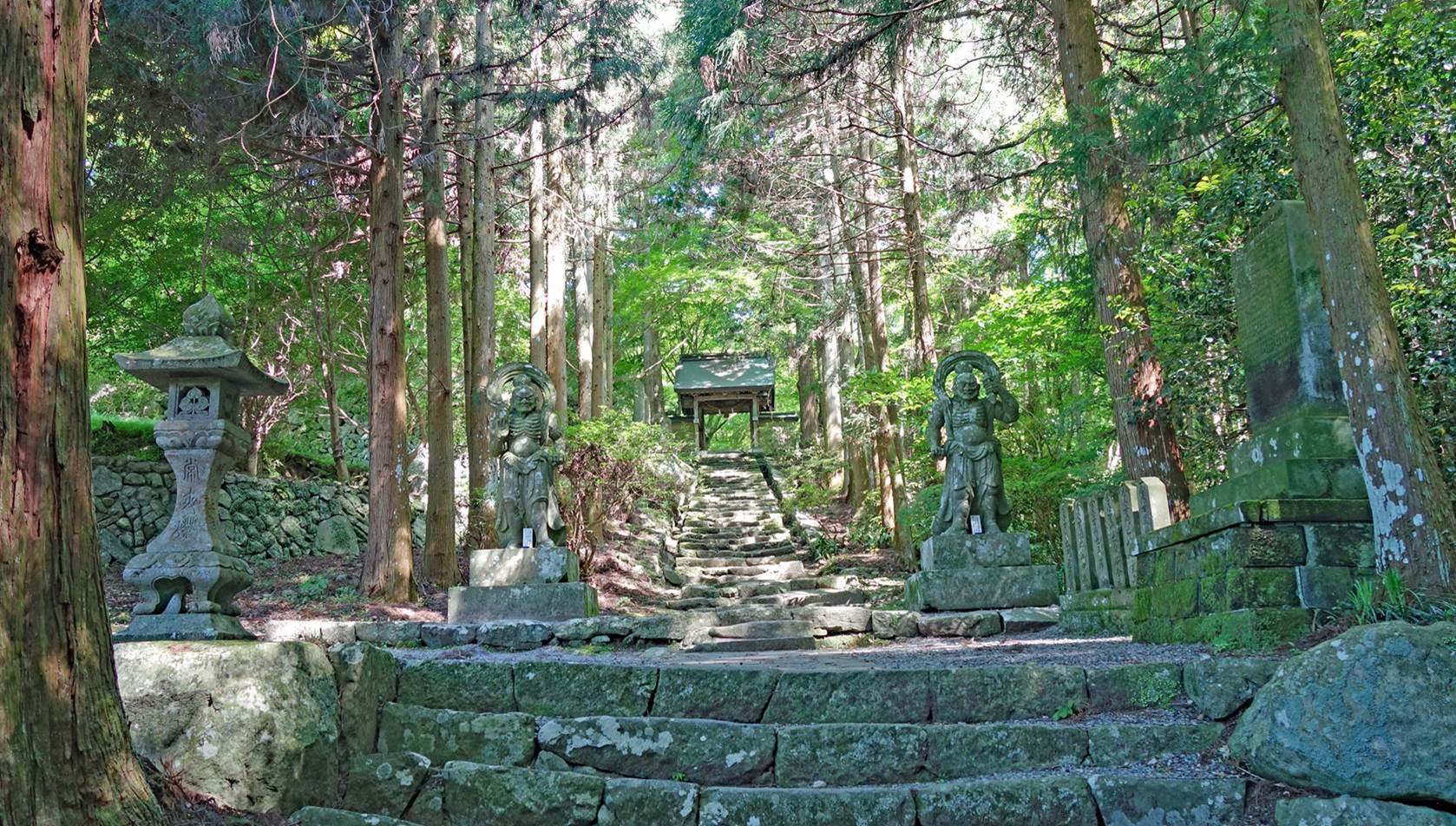
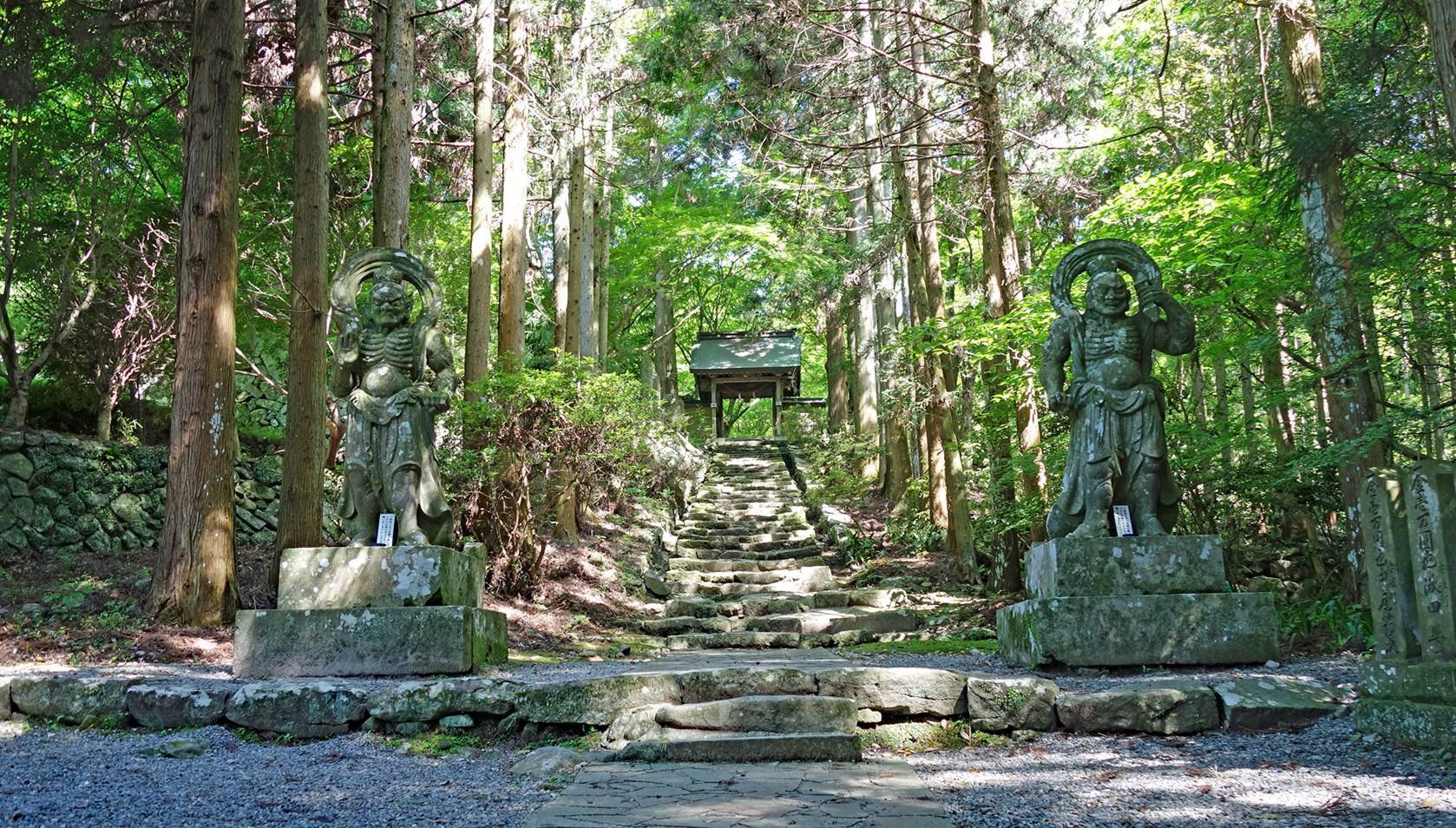
|
|
|
Left: The
Sanmon (main gate of the temple). Right: Pond a little further up.
|
|
|
The Gomado
(main lower hall), with a statue of Fudo Myo-o at the foot of the entrance
stairs.
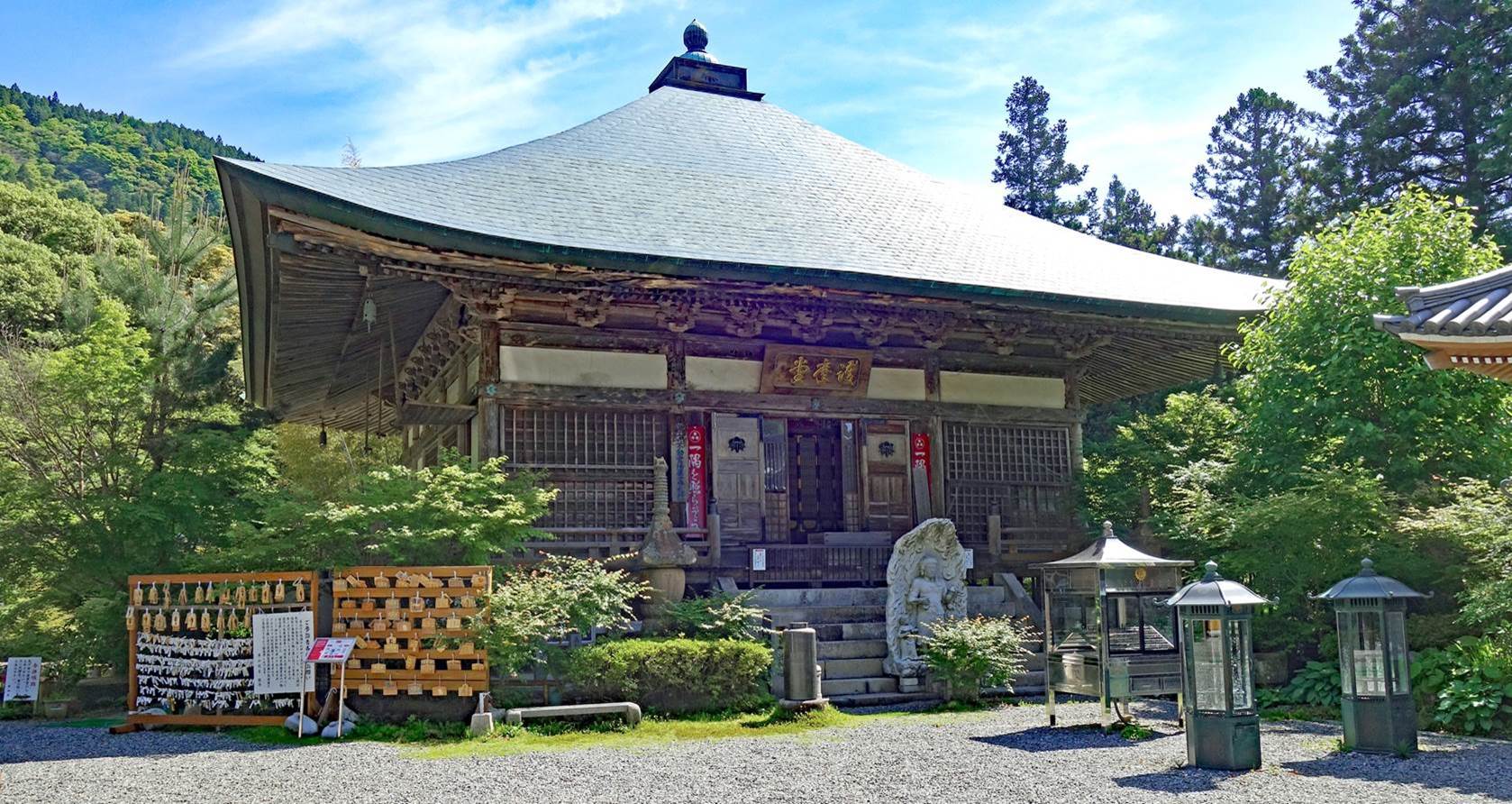
Small stone pagodas near the Gomado.
|
|
|
Stone where pilgrims submit requests to the deities for marital harmony.
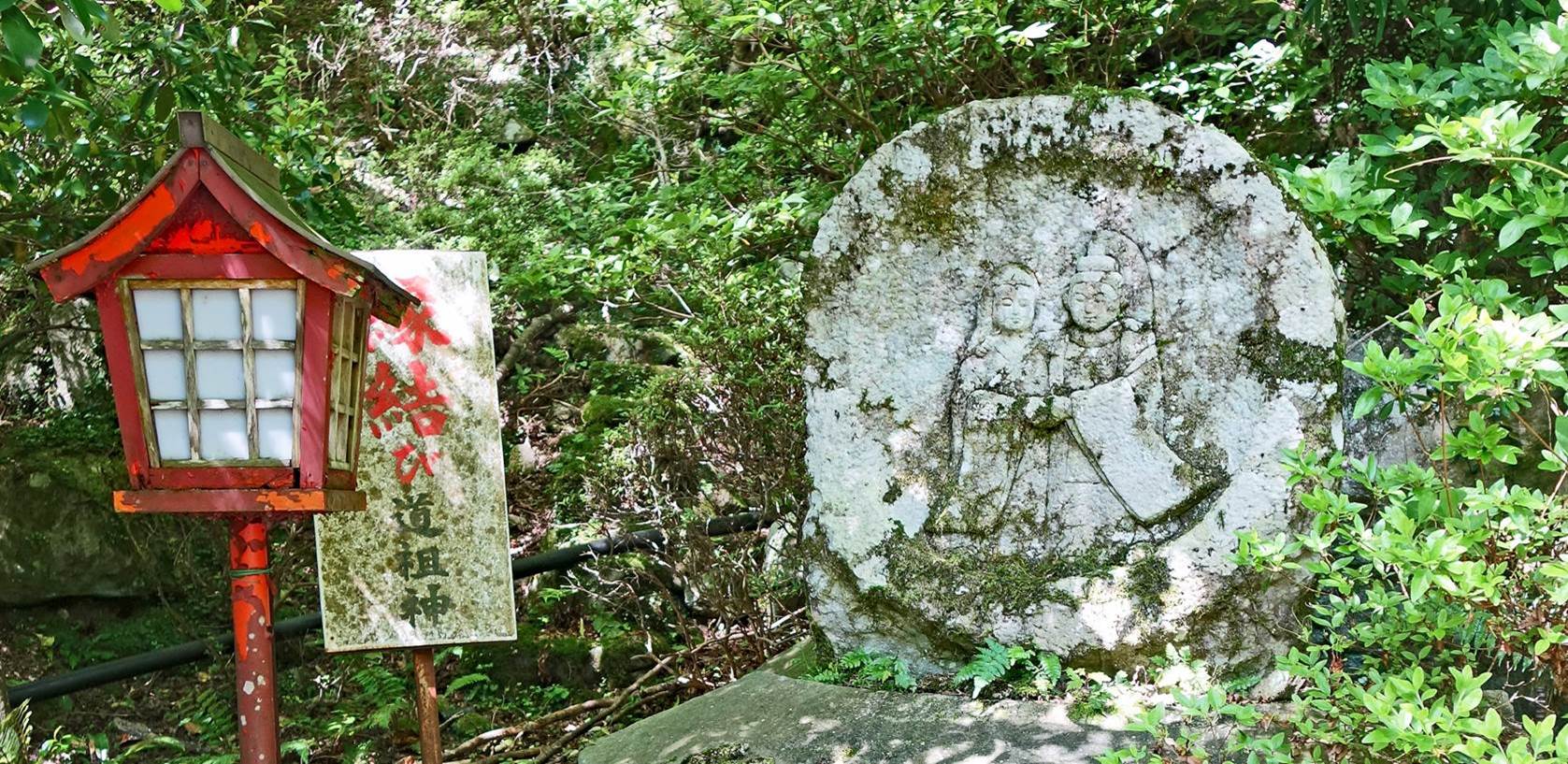
Interior of the Daikodo, a lecture hall located above the Gomado at an
intermediate level of the temple compound.
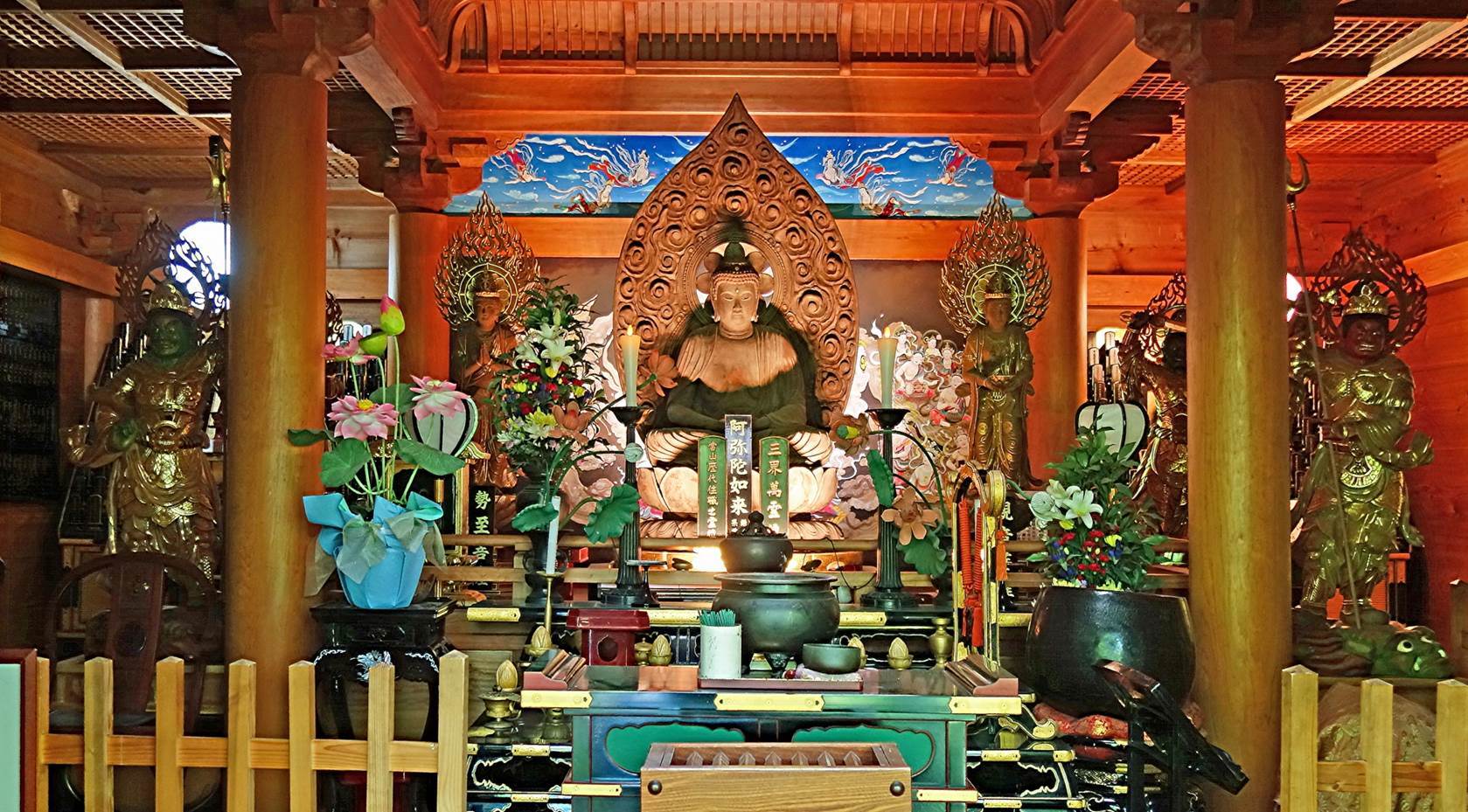
Nio guardians of the temple's Okunoin, the sanctuary at the upper level of Futago-ji.
|
|
|
Stone torii, a gate leading to the Okunoin,
an example of Buddhist-Shinto syncretism in the temple.
|
|
|
Lion statues behind the torii, at the base of the stairs leading to the
Okunoin.
|
|
|
Beautiful Okunoin praying hall built on a steep slope, partially inside a
man-made cave, near the top of the temple compound.
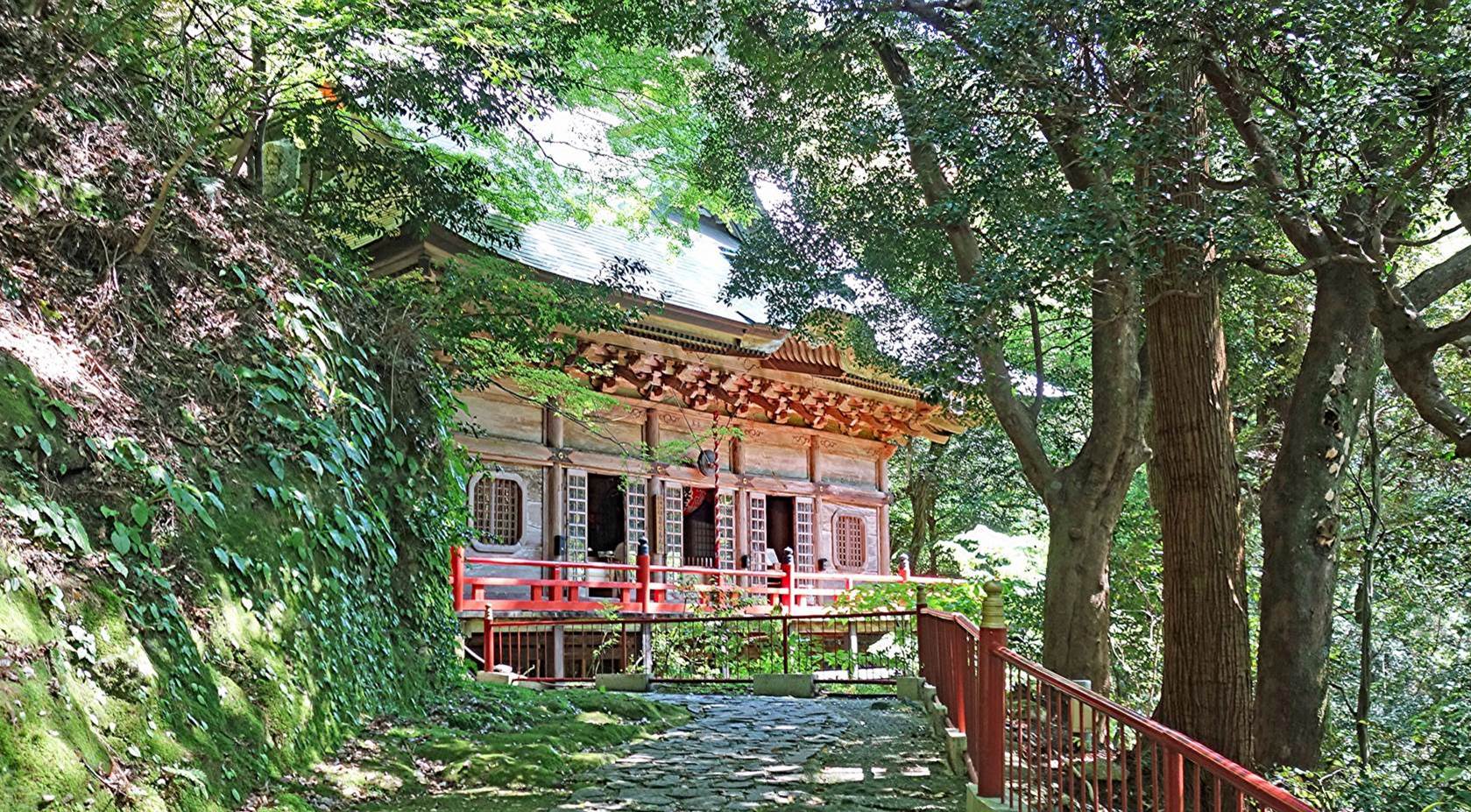
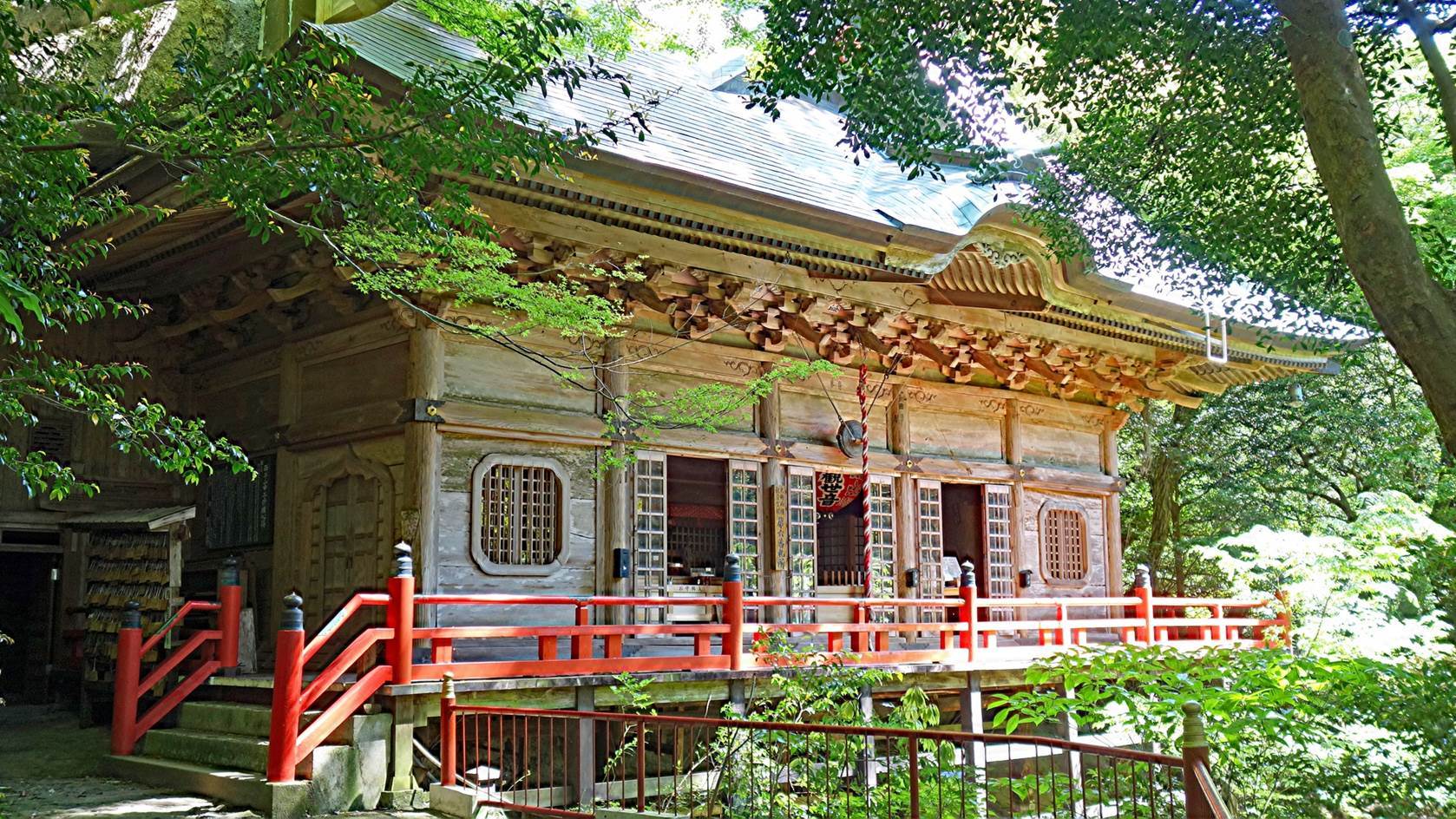
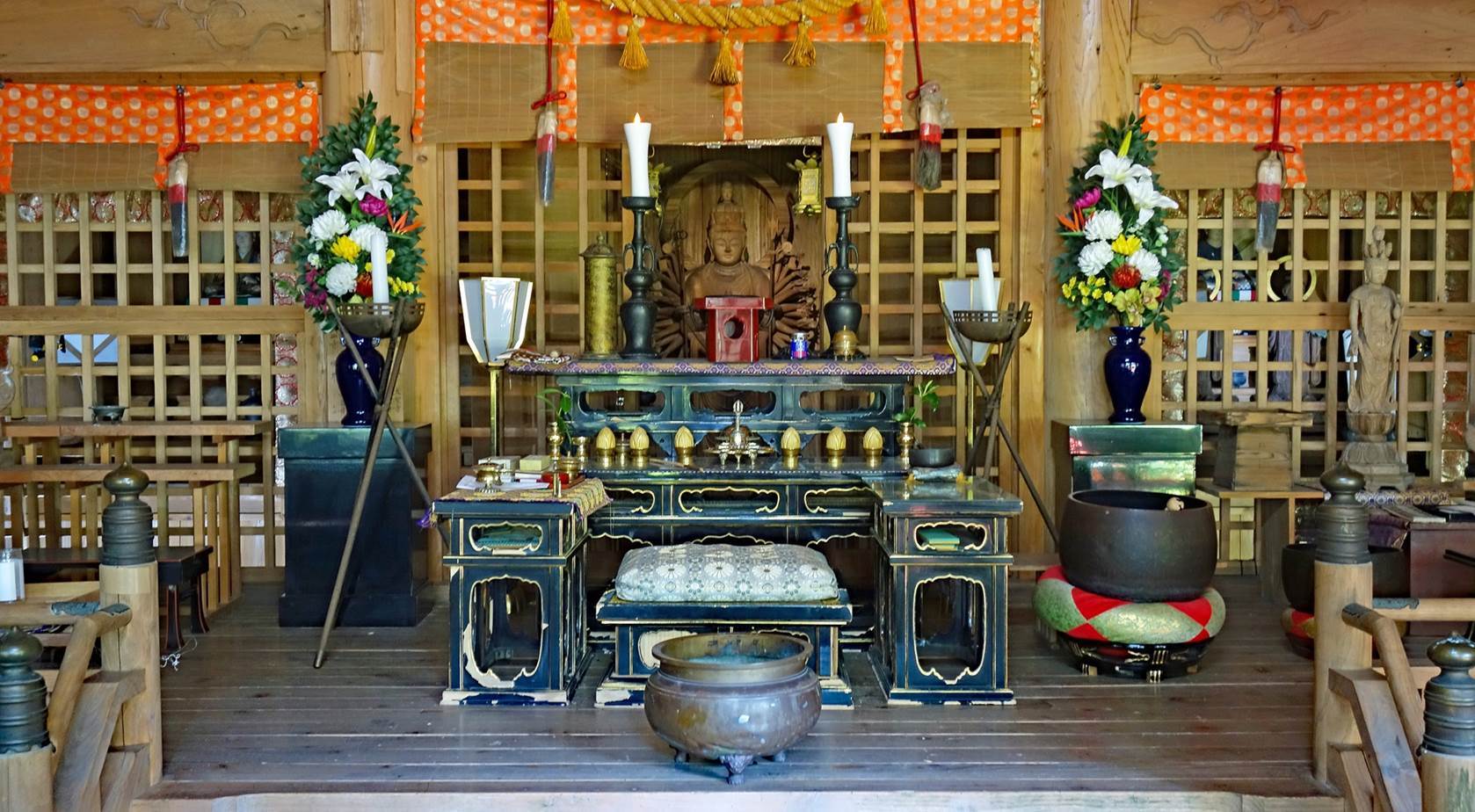
Tennen-ji
and Kawanaka Fudo
Located almost 4km west of Futago-ji, Tennen-ji is a rustic temple with a
thatched roof protruding from a shallow cave at the base of a rock cliff. It is
believed to have been founded in 718. In the river facing the temple, Kawanaka
Fudo is a 3m-tall rock carved with a representation of Fudo Myo-o and his two
attendants.
Facade of the temple.
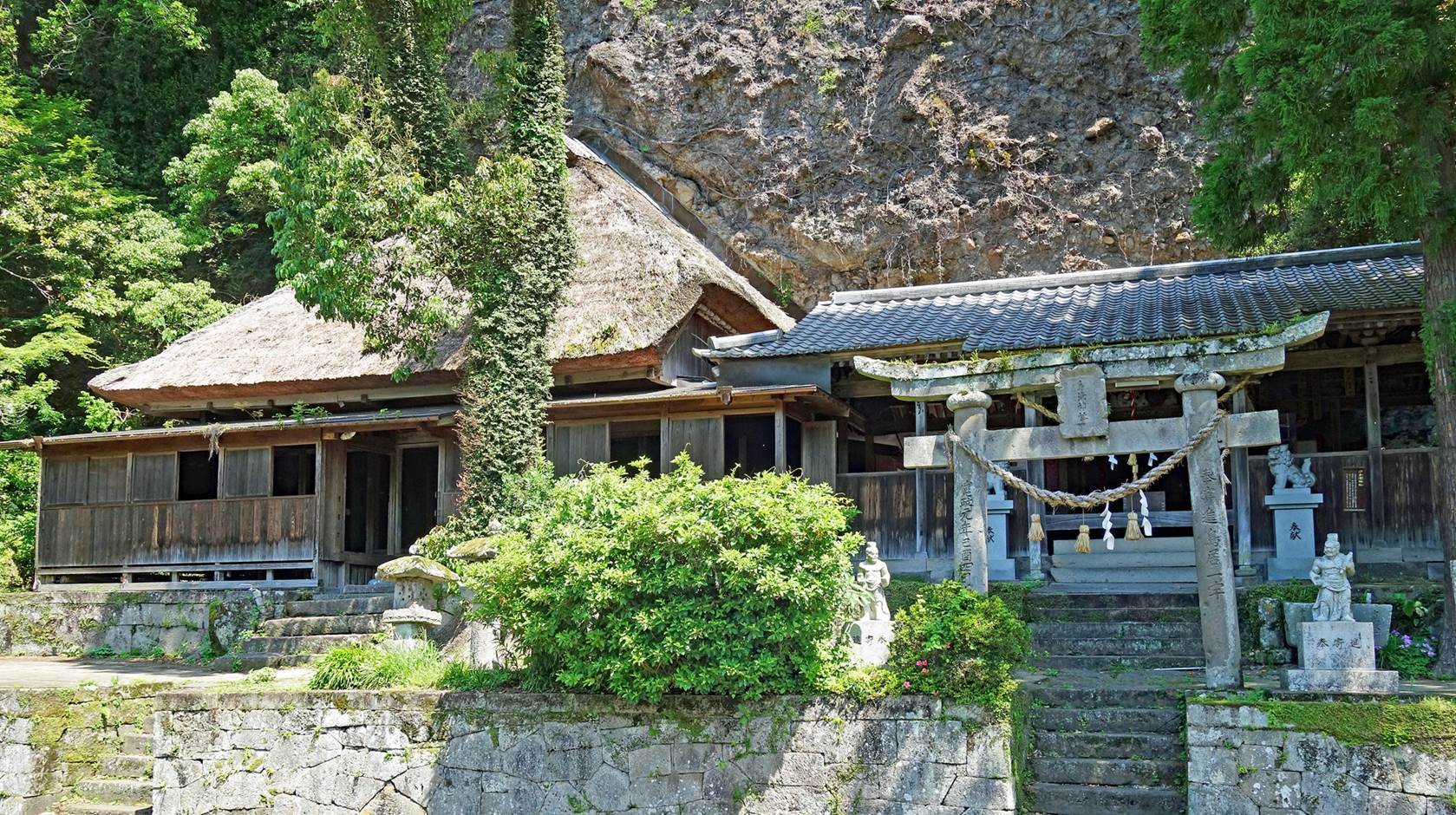
Interior of the temple under the thatched roof.
|
|
|
Kawanaka Fudo.
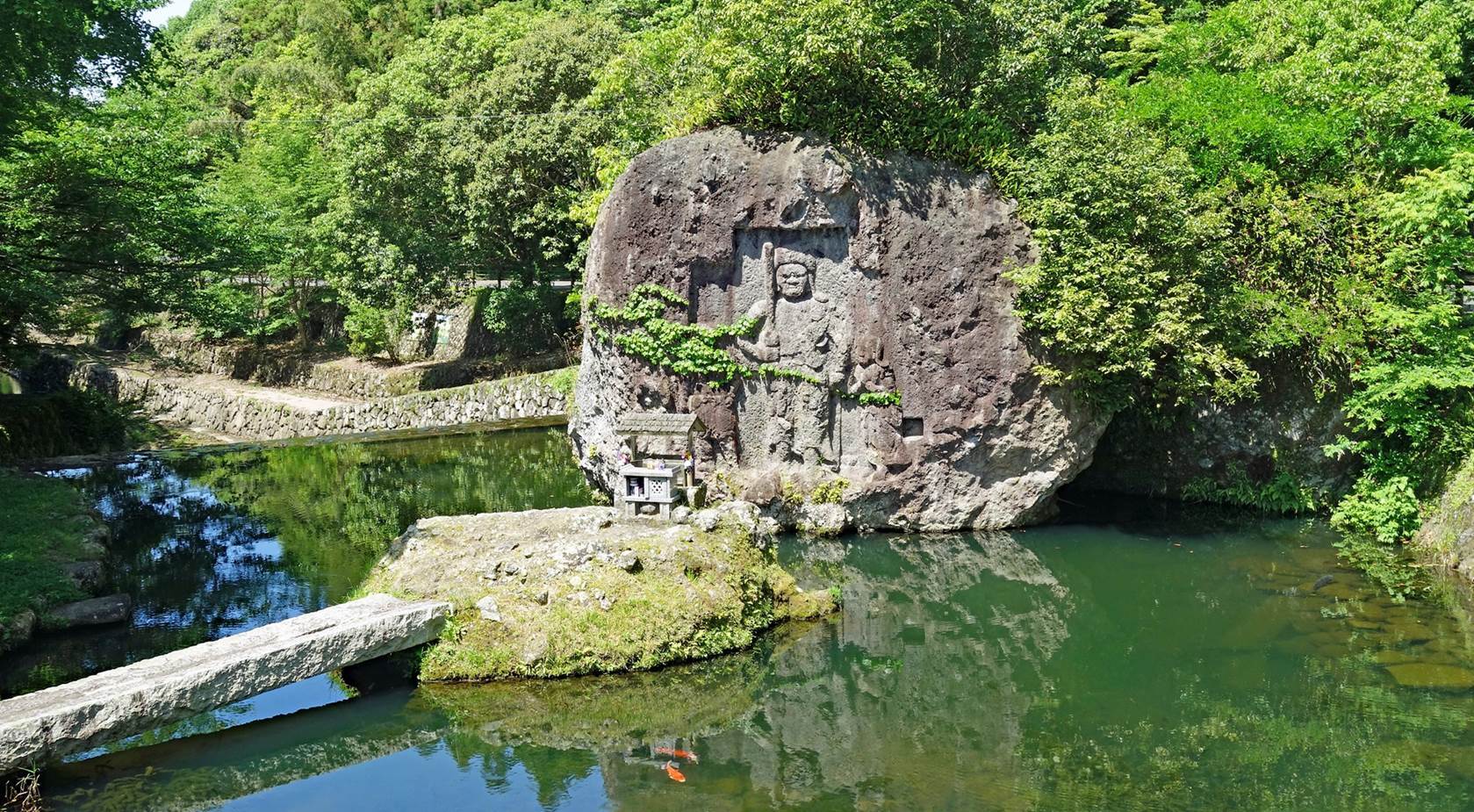
Fuki-ji
Located 5km southwest of Futago-ji, Fuki-ji is arguably the most
beautiful temple on the Kunisaki peninsula.
Gate of the temple with its two Nio guardians (here, assisted by a cat!).
|
|
|
|
Hall of the temple. Its simple and elegant lines reach perfection. It is
believed to have been built in the 12th century, at the end of the Heian
period.
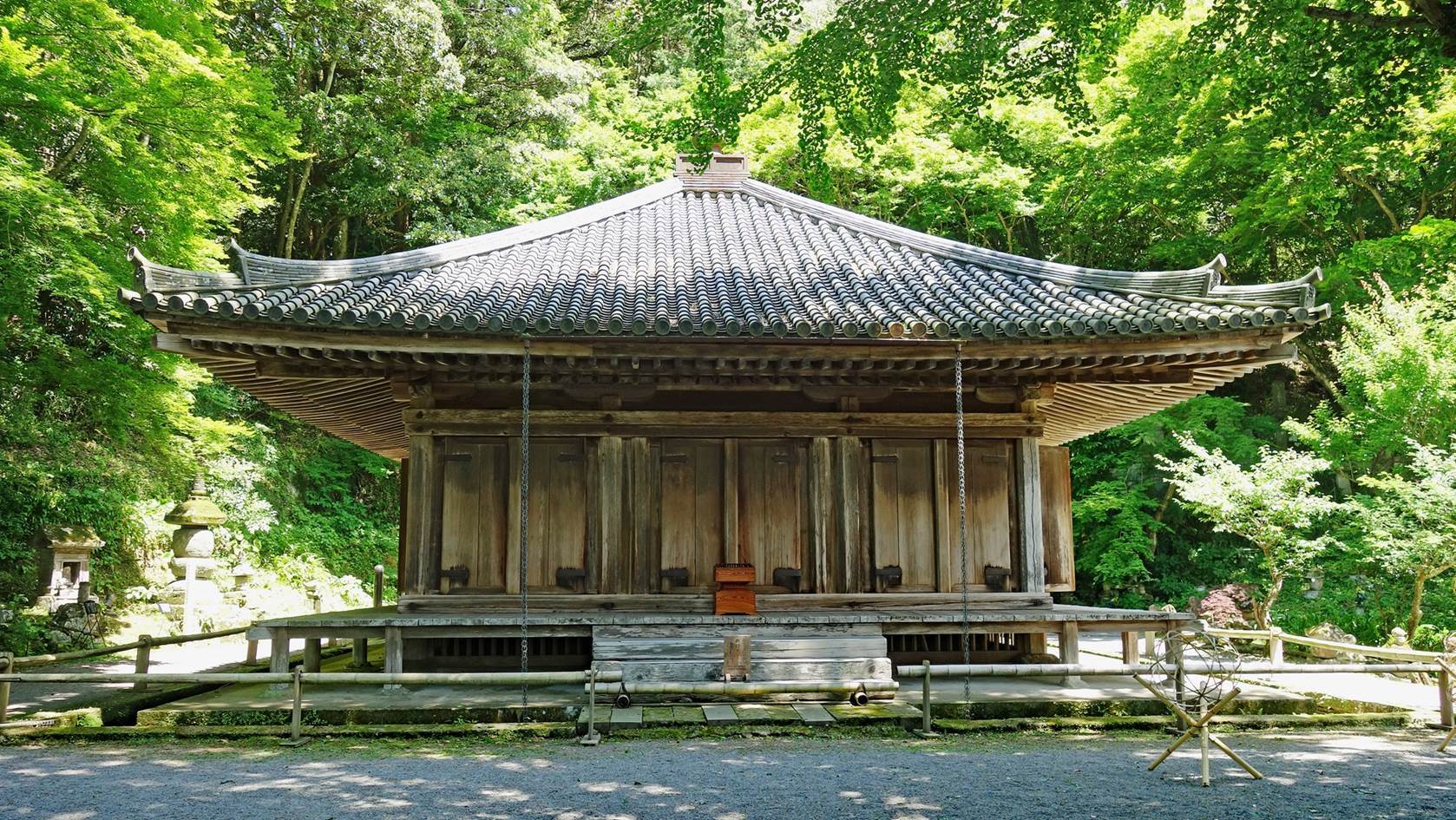
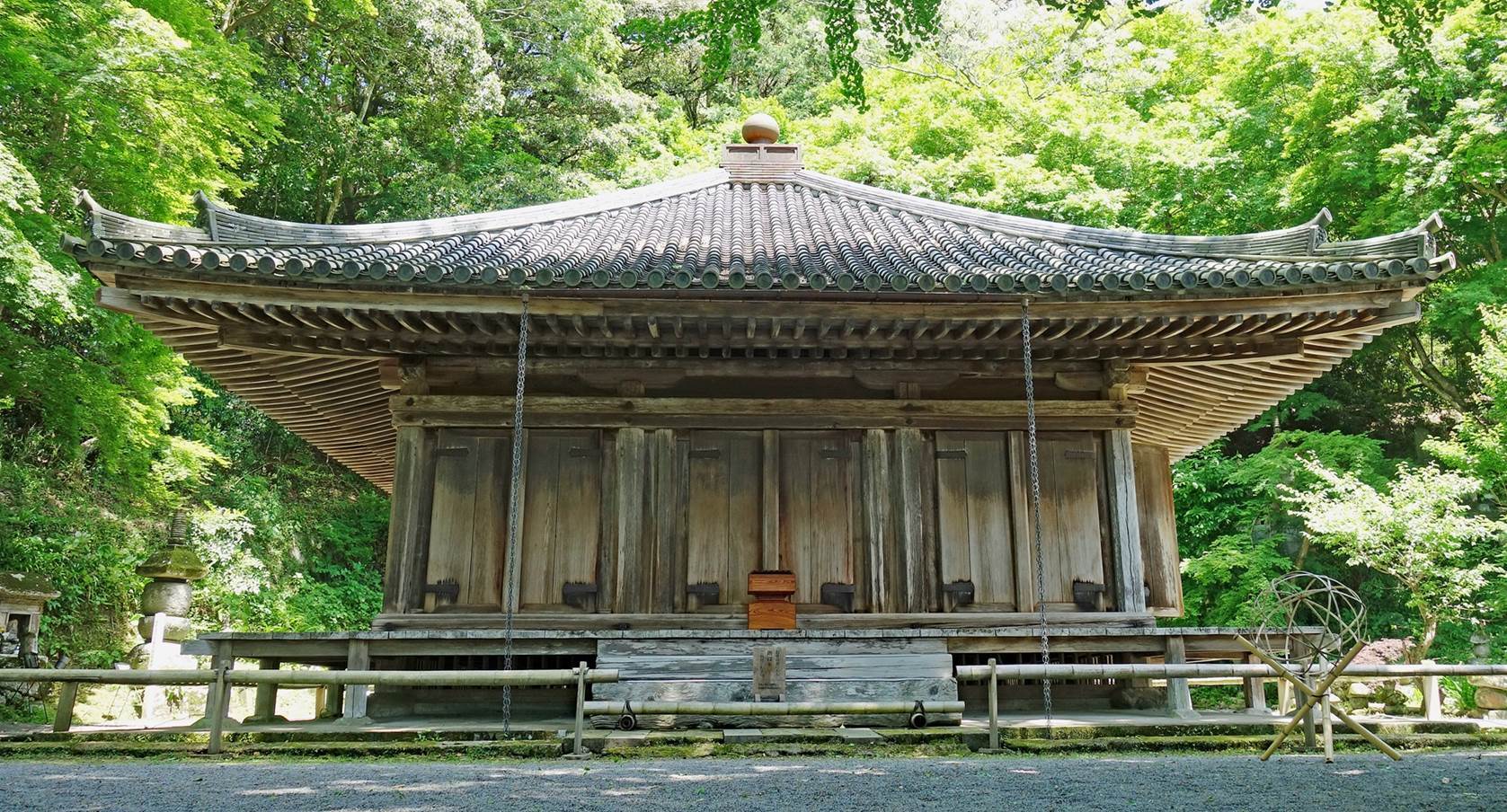
View of the interior of the hall, with a beautiful wooden statue of a
seated Amida Nyorai (Buddha of Limitless Light) at the center.
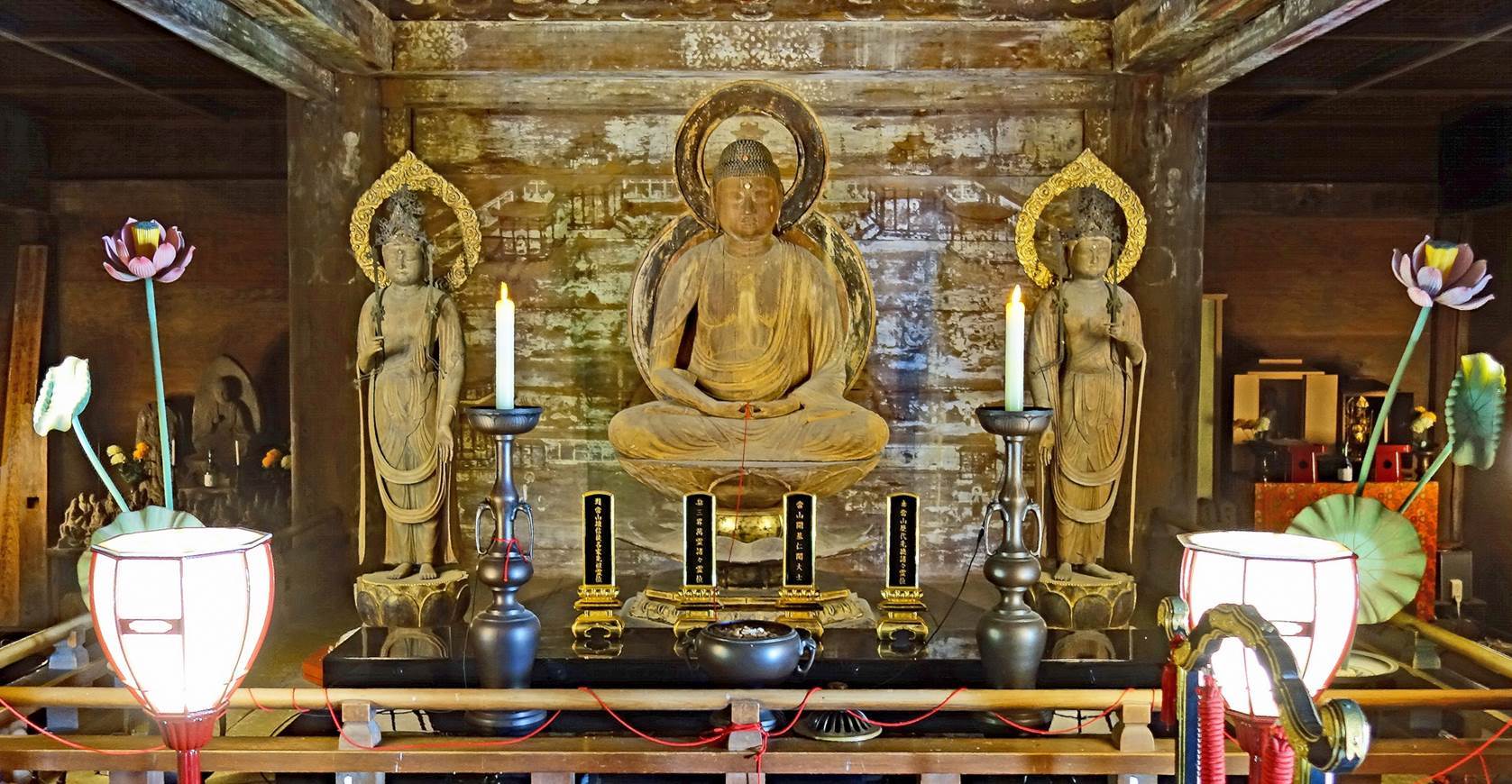
Motomiya
Stone Buddhas
Located some 2.6km southwest of Fuki-ji, these relief carvings are believed
to have been created during the Nanboku-cho period (1336-1392). The composition
consists of five characters, including Fudo Myo-o in the center.
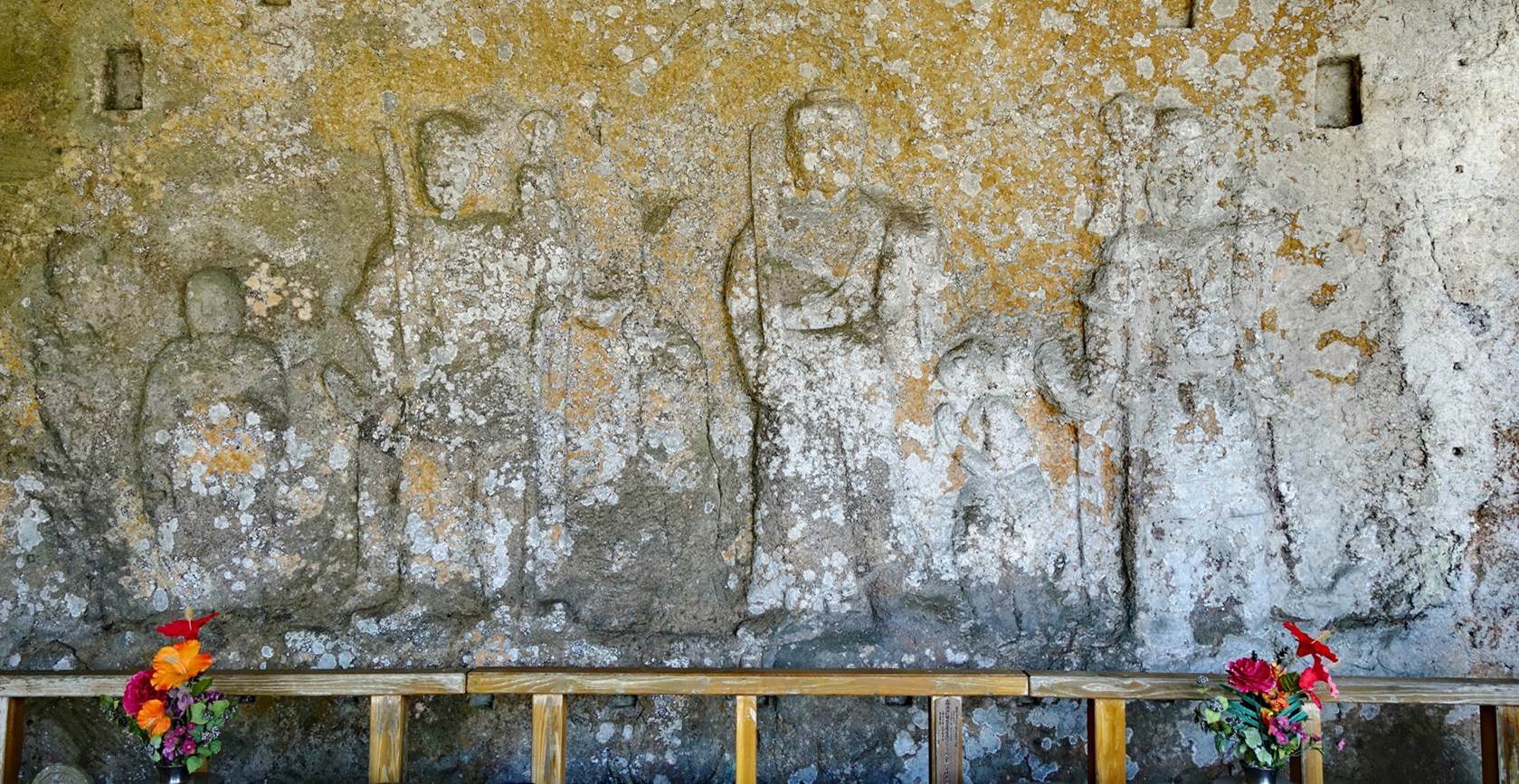
Stone towers
of Makiodo
Located 1.6km south of the Motomiya Stone Buddhas, the Makiodo site features
an outdoor display of stone carvings collected from various locations in the
Kunisaki peninsula, including the three sculptures shown below. These sculptures
date from the end of the Kamakura period (1185-1333) at a time of civil unrest
following two Mongol invasions. The stone ″tower″ on the left is a
kind of gorinto (a five-tiered tower representing the five Buddhist elements,
widely seen in Buddhist cemeteries across Japan). Here, its slightly different
shape is specific to the Kunisaki peninsula. One of its most interesting
distinctive features is the hole and cavity made at the top of the round
central tier to allow the faithful to insert votive prayers. The other two sculptures
(center and right photos) are tablets called Koshin towers, which are also
specific to the Kunisaki peninsula. In each of them, the relief in the upper
center represents Shomen Kongo, a fearsome Buddhist deity with multiple arms adopted
by local Koshin believers as a protector against illness. (Koshin belief
combines elements from Taoism, Shinto, Buddhism, and local mountain beliefs.)
At the base of these tablets are representations of the four yasha (spirit
protectors of Buddhism). In the central photo, a carving of the three wise monkeys
(see no evil, hear no evil, speak no evil) is visible above the four Yasha.
|
|
|
|
Interior of the Makiodo prayer hall, with its two massive statues of
muscular Nio guardians.
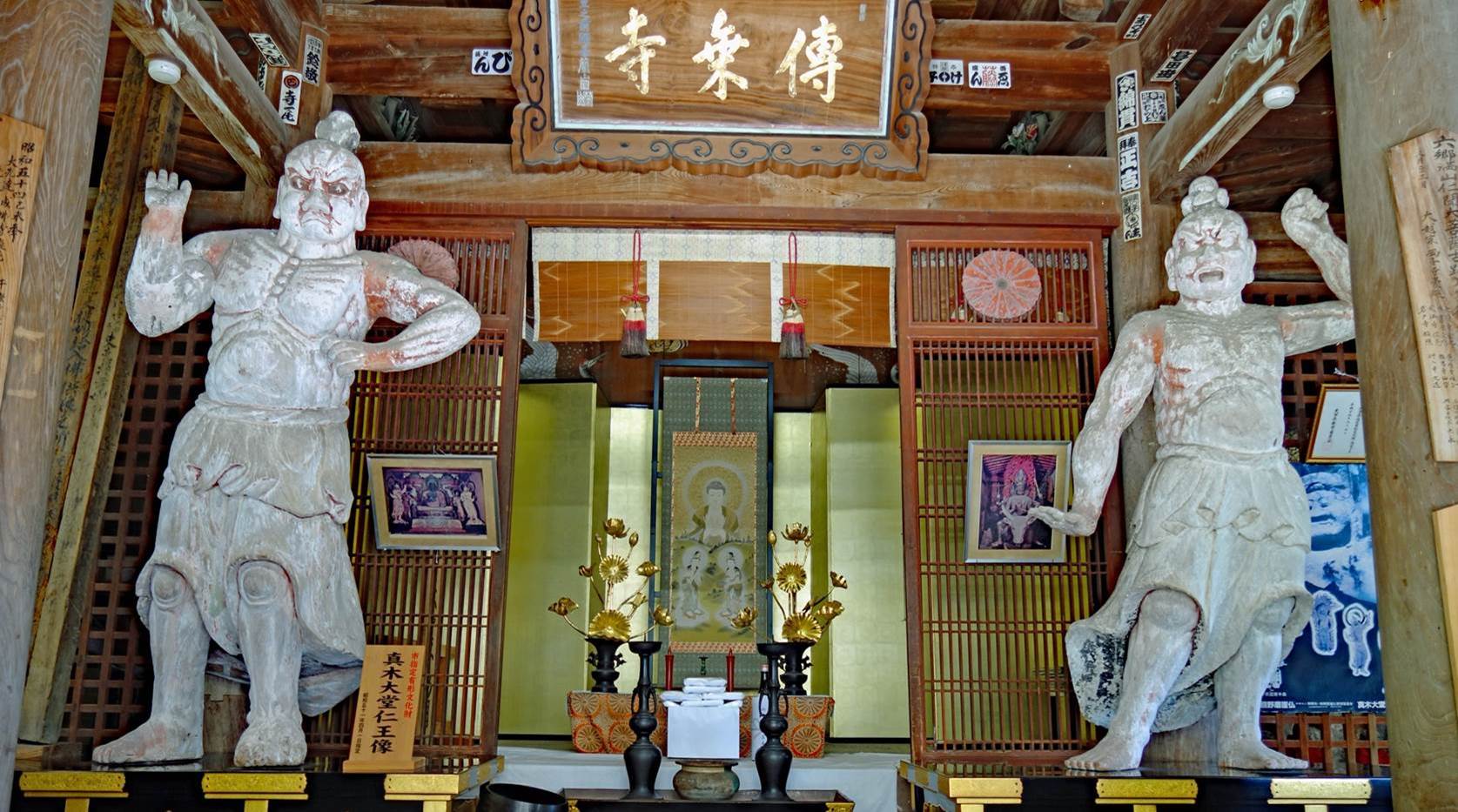
Kumano Stone
Buddhas
Located in the south of the Kunisaki peninsula, this site consists of two
large relief sculptures carved in a cliff. These sculptures are believed to
have been created during the early Kamakura period (1185-1333).
Relief sculpture (approximately 8m in height) depicting Fudo Myo-o. The
entire sculpture also includes poorly preserved representations of his two
attendants Kongara-doji and Seitaka-doji (not visible in the photos below).
|
|
|
Better preserved half-body Buddha sculpture carved in a niche of the rock
cliff, with a stack of stones left by worshippers at its foot. The statue is
approximately 6.8m in height.
|
|
|
![]()
